New in assortment - Tuscan cypress (Cupressus sempervirens 'TOTEM')9.11.2025
Now for the cultivar Totem. The name itself suggests a plant with the character of a sculpture – and that is exactly what it is. Totem is an extremely narrow, columnar cultivar of Tuscan cypress, like a green sword thrust into the ground. It grows slowly yet steadily, holding its shape like a soldier on guard. Its foliage is bright green, without the bluish tint typical of the species, and appears fresher than that of the cultivar ‘Pyramidalis’. The scale-like leaves are pressed tightly against short, sturdy branchlets that do not break in storms or under snow load. Totem is arguably the slimmest conifer known, a blessing for anyone with limited space. It was bred in 1984 in New Zealand by Trevor Davias and Cyril Watson, whose goal was to create a cultivar suited to modern gardens where space is precious – and they succeeded. Since then, Totem has become a bestseller wherever Mediterranean cypress can be grown.
Thanks to its exceptionally slender form, Totem is perfect for formal gardens where a strict vertical accent is needed – for example, flanking an entrance to create a ceremonial frame. It works beautifully in rows along paths, evoking a touch of Sunset Boulevard. In modern minimalist gardens, it shines as a solitary feature in a lawn or in a large container on a terrace, adding architectural clarity. In Mediterranean-style compositions, it sets the summer mood and looks stunning either in groups of three or in contrasting trios of shapes: tall + flat + round – an iconic signature of Mediterranean design.
The Mediterranean cypress occurs naturally in Europe and the Middle East within the Mediterranean sclerophyllous forest, most often in its shrub formations known as maquis (macchia), where it is considered non-native but easily adapted thanks to its ecological tolerance. These communities consist mainly of evergreen shrubs and scattered trees on dry, sun-scorched slopes and rocky outcrops with minimal soil and limited water supply. The cypress develops deep roots among stones to seek nutrients and groundwater and can absorb atmospheric moisture (especially at night and early morning) thanks to its large leaf surface. If we recreate similar conditions in temperate climates, it will thrive.
Totem will grow only in well-drained soil – ideally dry to slightly moist, with a preference for alkaline or neutral reaction; it cannot tolerate waterlogged sites, so drainage is essential. It requires full sun; without it, shaded parts will thin out. Being naturally narrow and dense, it requires no to minimum pruning, yet it can be lightly trimmed or kept smaller – best in late winter after frost or in mid-summer. Never cut into old wood without foliage, as it will not regenerate. When planting mature specimens or those with a with a small root ball, use angled stakes for 2–3 years to prevent windthrow until roots establish. Water only as needed after planting; later, irrigate only during prolonged drought. Fertilisation is generally unnecessary, except for weak plants, using slow-release conifer fertilisers in spring. Totem is resistant to pests and diseases and remarkably long-lived. It can be grown in large containers with perfect drainage only as a temporary plant until it outgrows them. So far, it has been tested in warmer regions of Central Europe – lowlands of Prague to Mìlník, southern Moravia, and southern Slovakia – where it performs well down to –18 °C with good mulching during severe winters. Enthusiastic growers report even greater hardiness, which is currently being verified.
Last update 09-11-2025
New in assortment - Adam’s laburnum (+Laburnocytisus adamii)28.10.2025
At first glance, Adam's laburnum looks like an ordinary laburnum – an upright shrub or small tree with an open crown and smooth grey-green bark. But a closer look at the branches reveals that something is amiss. Some shoots bear the typical trifoliate leaves of laburnum, others have the smaller, oval leaflets of broom, and then there are those that seem like a compromise between the two – leaves with vaguely defined margins, slightly asymmetrical, as if the plant were unsure which genus it belongs to and crying out, “Help! I don’t know who I am!” 😊 This visual confusion, however, is only a prelude to what happens in the flowering season.
In bloom, usually from late May to June, this chimaera turns into a botanical palette. On a single plant, clusters of flowers appear in three colours: bright yellow (typical of laburnum), deep purple (characteristic of broom), and an unusual coppery pink found nowhere else – these flowers arise in the graft zone where the genetic layers of both parents overlap. The shape of the flowers also varies: some are classically papilionaceous, others smaller and more compact, as if the plant were trying to express both identities at once. Flowers often appear on different branches depending on which cell layer dominates – and sometimes even on the same branch in mixed combinations.
Growth is generally slower than in laburnum, with lower vigour and smaller annual increments. The habit tends to be irregular, often with asymmetric branching, which only emphasises its hybrid origin. Height usually does not exceed 3–4 metres, width is less but depends on conditions and training. As a vegetative chimaera, it cannot be propagated by seed – only by cuttings or renewed grafting, which limits its availability and makes it a collector’s rarity. In the garden, place it as a specimen in a prominent position where its unusual appearance and variable flowers can be admired. Thanks to its irregular habit, it suits naturalistic compositions where it will not look out of place but rather as an exotic curiosity, complemented by deciduous shrubs or small trees with contrasting foliage, such as black elder ‘Black Lace’ or willow ‘Golden Sunshine’.
This chimaera is not demanding on soil but thrives best in light, well-drained substrates with neutral to slightly alkaline reaction. It requires a sunny site – in shade it suffers from poor flowering and increased susceptibility to disease. Watering should be moderate; it dislikes permanently waterlogged soils. Fertilisation is unnecessary. Pruning is not required, but after flowering you may lightly trim for rejuvenation – because it is a chimaera, it is more sensitive to mechanical damage at the graft union, so heavy shaping cuts are not recommended. All parts of the plant are poisonous, especially the seeds. Its frost hardiness is comparable to laburnum, at least down to –30 °C (USDA zone 5), and it does not require any winter protection.
Last update 27-10-2025
New in assortment - saw-toothed sweet olive (Osmanthus serrulatus)27.10.2025
Saw-toothed sweet olive is one of the most fragrant members of its genus – its small, white flowers can fill the mountain air of western China with a sweet, jasmine-like scent that travels far beyond its modest appearance. This species originates from Sichuan province, where it grows at elevations around 2,000 metres as part of the evergreen understorey of montane forests. It was botanically described by Alfred Rehder in 1916, based on collections made by the renowned plant hunter E. H. Wilson, who discovered it near the town of Baoxing – a region known not only for rare plants but also as the native habitat of the giant panda. It was introduced to Europe as early as 1912, when it was planted in the Royal Botanic Gardens of Kew, but it remains more of a collector’s treasure than a common garden shrub.
What sets it apart from most other osmanthus species is its compact, dense habit, which retains a natural elegance without the need for pruning, and its distinctive leaf shape. The leaves are narrowly ovate to elongate-elliptic, leathery, with gently arching tips, giving the plant a unique character. Their surface is not very glossy, rather somewhat satiny. The species name serrulatus refers to shallowly serrated leaf margins which become almost completely smooth and entire as the plant ages. Flowers appear in autumn, in Central Europe typically from late September to late October or early November, forming short clusters in the leaf axils. They are small, white, four-petalled, and true to the genus name – wonderfully and intensely fragrant, with notes of jasmine, apricot, and citrus blossoms. After flowering, it produces bluish-black ellipsoid fruits that ripen in autumn. These are inedible but not toxic.
As saw-toothed sweet olive is relatively rare, every collector and lover of unusual evergreens will likely place it according to their own vision. But if I may suggest, it pairs beautifully with other evergreen shrubs that offer contrasting foliage textures: palmate-leaved Choisya hybrids, box-leaved Ilex crenata, fern-leaved Mahonia, leathery-leaved Ligustrum, airy and rustling Nandina, and at ground level, why don’t we use black-leaved Ophiopogon and violet-flowering Liriope. What do you think? 😊
Give your sweet olive a good, nutrient-rich soil – acidic for deeper leaf colour, though this is not essential – and be sure to mulch generously to protect against rapid freezing. For abundant flowering, it should be grown exclusively in full sun, but if you live in a colder region, choose a spot where it is shaded from direct winter sun yet receives plenty of light in summer. We recommend planting mature specimens with hardened wood, and if the leaves get sun-scorched after their first winter outdoors, the plant will regenerate new ones in spring. If you’ve acquired a young plant, bring it indoors for the first few winters until its branches strengthen and the wood matures. Like other autumn-flowering Osmanthus species, it does not require winter watering, provided it is well watered before the onset of frost. Once established (about two years after planting), it tolerates dry spells well, especially in well-drained soil. Still, during hot summer weeks, it will appreciate occasional watering, particularly in sandy or light soils. On the other hand, it dislikes waterlogging – persistently wet soil can lead to root rot. Mulching helps retain moisture and protects the root system from temperature fluctuations. Osmanthus are long-lived shrubs that rarely suffer from diseases and according to our observations saw-toothed sweet olive is not favoured by vine weevils as much as other species. So far, it has proven hardy down to –17 °C without any damage, and our testing continues – it is expected to withstand temperatures as low as –23 °C.
Last update 27-10-2025
New in assortment - Sweet flag (Acorus gramineus 'OGON')26.10.2025
If you love the character of ornamental grasses, you’ll likely fall for this – to be botanically correct – non-grass 😊. Its name is Ogon and it is a cultivar of sweet flag that shines like a jewel thanks to its leaf colouration. It immediately draws attention with its bright yellow leaves adorned with fine olive-green stripes, arching gracefully like ribbons of water. Its habit is low, forming dense clumps about 30 cm tall, slowly expanding through rhizomes. The leaves are aromatic, semi-evergreen, and remain decorative in mild winters. The flowers are inconspicuous, greenish-yellow, appearing from spring to summer, but of no ornamental value. Compared to the species, ‘Ogon’ stands out for its leaf colour and more compact growth. The original breeder is not clearly documented, but the cultivar appeared in Japanese gardens in the latter half of the 20th century. The name ‘Ogon’ means “gold” in Japanese, perfectly capturing its appearance.
In garden compositions, ‘Ogon’ acts as a bright accent that can illuminate even darker corners. It’s ideal for pond edges, rain gardens, or as a border along moist pathways. Interestingly, the clump does not thicken from the center – similar to irises, the centre remains slightly open while new leaves emerge around the edges. This growth pattern gives the plant an airy, fountain-like look, making it easy to pair with other species. For example, it creates harmonious plantings with Japanese iris, annual honesty (Lunaria annua), or cardinal flower (Lobelia cardinalis), offering both aesthetic appeal and ecological compatibility. In containers, it can serve as a striking solitary specimen, provided the soil remains consistently moist (keep the saucer full of water). In naturalistic landscapes, it helps stabilize banks and prevent erosion.
Caring for sweet flag is straightforward if basic conditions are met. It prefers moist to wet soil, it is rated FACW - for facultative wetland, ideally of neutral to slightly acidic pH (6–7). It thrives in full sun, where its golden foliage reaches peak vibrancy. It tolerates partial shade, but in overly dark locations, its coloor may fade and growth become sparse. In hot climates, afternoon shade helps protect the leaves from scorching. The plant is not suitable for long-term cultivation in dry containers but excels in consistently moist environments. It is resistant to diseases, pests, rabbits and deers. No toxicity or allergenic effects are known. To maintain vigour, it’s advisable to divide and replant it every few years. Its cold hardiness reaches down to -29 °C (USDA zone 5).
Last update 26-10-2025
New in assortment - African blue lily (Agapanthus 'ANDbin' EVERPANTHUS® EVER SAPPHIRE)26.10.2025
Agapanthus EVER SAPPHIRE is like a blue flame rising from a tuft of fresh green leaves, bursting into full splendour in the height of summer. Its flowers display a deep, velvety blue with a hint of violet, reminiscent of the evening sky just after sunset. They are arranged in tight umbels atop slender yet sturdy stems that emerge from a compact clump of foliage. The leaves are medium green, strap-shaped, with a subtle sheen that keeps the plant looking fresh even outside its flowering period. The overall habit is low and firm – the plant forms dense clumps about 50–60 cm tall, appearing both tidy and natural. It blooms in July and August. This cultivar belongs to the EVERPANTHUS® series and was developed in 2007 in Hartebeespoort, in South Africa’s North West Province, by botanist Quinton Bean, who crossed a hybrid form of Agapanthus caulescens with a hybrid of Agapanthus campanulatus. It is protected under patents PP26336 (USA – 2015) and EU 55541 (Europe – 2016).
Agapanthus in the garden exudes quiet confidence – and rightly so, as its blue flowers are a rare sight in temperate climates, so make the most of them. EVER SAPPHIRE pairs beautifully with plants of finer texture, such as compact catmints or cushion-forming thymes, evoking the feel of a Mediterranean garden. For a more prairie-like rhythm, combine it with festuca, stipa, and gaura. And for maximum aesthetic impact with a modern edge, try an ambitious composition with silver-leaved perennials and subshrubs like helichrysum, artemisia, santolina, or senecio.
Grow agapanthus in fertile soil with excellent drainage to prevent root rot over winter. From late spring to the end of summer, the plant benefits from regular feeding and occasional watering, although its fleshy roots allow it to tolerate short dry spells. In Mediterranean climates, it is a beloved summer feature in both containers and garden beds. In temperate regions, it excels in summer compositions near pools and terraces, where the season lingers longest. Good news: it is not favoured by slugs. For winter protection in zone 7, a layer of dry bark or leaves at the end of autumn is sufficient, but in colder areas with harsh winters, a thicker mulch and waterproof cover are recommended. At the end of winter, as soon as the risk of severe frost has passed, remove the cover and half the mulch, then wait for true spring (March/April) to uncover the rest, clear away old foliage and allow the plant to re-emerge. Tested hardiness is -17 °C (USDA zone 7) and it is believed to tolerate even lower temperatures.
Last update 26-10-2025
New in assortment - apple tree – midseason (Malus domestica 'GLOSTER')25.10.2025
The fruits of Gloster apple are large, conical to bell‑shaped, often reminiscent of ‘Starking Delicious’. The skin is green, almost entirely covered with a deep red coloration and a strong bloom, giving the apples a striking and attractive appearance. The flesh is pale greenish, crisp, juicy, and aromatic, with a pleasantly tangy flavor. Harvest takes place in mid‑October, eating maturity begins in December, and the fruits can be stored until March while retaining both quality and appearance. Thanks to their size and long keeping quality, they are well suited for fresh consumption as well as for culinary use. The most common rootstock is M9 for intensive plantings, while MM106 is used for medium‑sized trees with longer lifespan.
The cultivar originated in Germany in 1951 at the breeding station in Jork near Hamburg, from a cross between ‘Weisser Winterglockenapfel’ (Bellflower) and ‘Richared Delicious’. It was introduced into practice in 1967 and registered in Czechoslovakia in 1986. The tree grows vigorously, forming narrower pyramidal crowns with reddish wood and petioles. It flowers in the mid‑late season, which reduces the risk of frost damage to the blossoms, and is self‑sterile, requiring suitable pollinators. The best partners are ‘Golden Delicious’, Cox’s Orange Pippin’, or ‘Gala’, while ‘Gloster’ itself is also a good pollinator for other cultivars. It is characterized by high and regular yields, notable resistance to powdery mildew, and good winter hardiness, making it a reliable choice even for cooler regions.
Apple trees in general are not demanding to grow. They thrive best in sunny sites with fertile loamy to sandy‑loam soils that are well‑drained and moderately moist. The optimal pH is slightly acidic to neutral. They do not tolerate permanently waterlogged soils, nor extremely dry and windy locations where fruit may drop prematurely. Young slender trees and half‑standards should be tied to a stake to ensure straight growth, while tall‑standards benefit from a firm wind‑brace for the first three years. During this period (and preferably longer) the soil above the roots should be kept clean of grass and weeds. Fertilization can be light, ideally organic, but is not essential. Pruning, on the other hand, is generally discouraged — it is an old and misguided habit of previous generations that often resulted in water sprouts and overcrowded crowns without fruit. Modern experience shows that, given the right site, apple trees shape a balanced crown on their own and bear reliably without intervention. Most cultivars are highly frost‑hardy, easily withstanding temperatures below –30 °C, so in our conditions they require no winter protection. At harvest and in storage, however, the fruit should be handled carefully, as even small bruises can shorten its keeping quality.
Last update: 24-10-2022; 23-10-2025
New in assortment - pear tree - medium early (Pyrus communis 'SOMMERBLUT')23.10.2025
The name of the pear cultivar Sommerblut ('Summer Blood') refers both to its ripening season and to the deep red color of its flesh, which is striking and unexpected. Its fruits ripen in August to September and are small to medium in size, shaped like petite butter pears. At first glance they show a greenish‑yellow skin with a red blush, but the real surprise lies inside – the flesh is deep red to wine‑colored, juicy and crisp. The taste is sweet‑tart, refreshing, with a subtle woodland note that sets it apart from classic butter pears. Thanks to the high anthocyanin content, the fruit is not only visually attractive but also nutritionally interesting. The pears are suitable for fresh eating, but they shine especially in juices, ciders, and perries, where the ruby color gives the drink a unique appearance and character. They cannot be stored.
The tree grows with medium vigour and forms a regular, rather upright crown that spreads with age to about five to seven meters in width. On seedling rootstock, it reaches ten to fifteen meters in height and is long‑lived; on weaker rootstocks such as quince or Pyrodwarf it remains smaller and comes into bearing earlier. It flowers in May with white blossoms that are self-sterile, so it requires suitable partners nearby. The best pollinators are cultivars flowering in the same period, such as ‘Conference’, ‘Williams’, ‘Clapp’s Favourite’, or ‘Bosc’. With its unusual character and attractive fruit, ‘Sommerblut’ is a welcome highlight in gardens and collections of rare fruit trees.
Pears are not demanding to grow. They thrive best in full sun but will tolerate partial shade. The soil should be loamy to sandy‑loam, well‑drained yet moderately moist, with a pH from slightly acidic to neutral. In the first years after planting, young trees should be tied to a stake, and high‑stem forms secured with a strong windbreak support, to ensure a straight trunk and stable root system. Fertilization is possible, preferably organic but not needed, and pruning is not required either – only a gentle thinning of the crown at the end of winter, more for aesthetics than necessity. The tree is hardy to at least –34 °C (USDA zone 4) and requires no winter protection.
Last update 22-10-2025
New in assortment - apple tree – midseason (Malus domestica 'ÈISTECKÉ LAHÙDKOVÉ')23.10.2025
The fruits of Princess Louise (aka ‘Marquis of Lorne’) belong among medium to large apples, broadly round in shape, with a thin and delicate skin that turns from greenish to yellow at full maturity, often with a rosy blush. The flesh is snow‑white, very fine, crisp, and juicy, with a pleasantly sweet‑tart flavor and subtle aroma. A remarkable trait is that when cut, the flesh does not brown quickly (resistant to rapid oxidation), making it ideal for salads or desserts where it retains a fresh appearance. Eating maturity begins in October, and the fruits keep until January, under ideal storage conditions even until March.
This cultivar was bred in Canada around 1860 by L. Woolverton in Grimsby, Ontario. The tree grows moderately vigorously, with a crown that is initially rounded and later slightly drooping. It flowers in the mid‑early to mid‑season and is self‑sterile, requiring suitable pollinators. The best partners are cultivars flowering at the same time, such as ‘Jonathan’, ‘Ontario’, ‘Oldenburg’, or also ‘James Grieve’ and ‘Lord Lambourne’. The most typical rootstock choices are MM106 or M7, producing medium‑sized, balanced trees that bear early and remain hardy. For traditional tall standards in the landscape, A2 is preferred for its longevity and resilience.
Apple trees in general are not demanding to grow. They thrive best in sunny sites with fertile loamy to sandy‑loam soils that are well‑drained and moderately moist. The optimal pH is slightly acidic to neutral. They do not tolerate permanently waterlogged soils, nor extremely dry and windy locations where fruit may drop prematurely. Young slender trees and half‑standards should be tied to a stake to ensure straight growth, while tall‑standards benefit from a firm wind‑brace for the first three years. During this period (and preferably longer) the soil above the roots should be kept clean of grass and weeds. Fertilization can be light, ideally organic, but is not essential. Pruning, on the other hand, is generally discouraged — it is an old and misguided habit of previous generations that often resulted in water sprouts and overcrowded crowns without fruit. Modern experience shows that, given the right site, apple trees shape a balanced crown on their own and bear reliably without intervention. Most cultivars are highly frost‑hardy, easily withstanding temperatures below –30 °C, so in our conditions they require no winter protection. At harvest and in storage, however, the fruit should be handled carefully, as even small bruises can shorten its keeping quality.
Last update: 23-10-2025
New in assortment - bigarreau sweet cherry – medium early – self-sterile (Prunus avium 'MOREL')22.10.2025
Morel belongs among old, dark-skinned, midseason sweet cherries of the bigarreau type. The fruits are medium to large, round, with a dark red to almost black skin. The flesh is firm, juicy, and sweet, with a clean, distinctive flavour suitable for fresh consumption as well as for preserving. Ripening occurs in late June to early July under Central European conditions, with a balanced harvest and good resistance to cracking under normal summer weather. The cultivar is self-sterile and requires pollinators flowering at the same time; reliable partners include classic mid- to late-season varieties such as ‘Hedelfingen’, ‘Schneiders Späte Knorpelkirsche’, or ‘Büttner’s’.
The tree grows moderately strongly, with an upright crown in youth that later broadens into a wider oval shape, forming solid lateral branches and tolerating formative pruning. Nevertheless, pruning cherries (and stone fruits in general) is not recommended, as large wounds heal poorly and even smaller cuts may become entry points for fungal diseases such as blossom wilt (Monilinia). The exception is formative or maintenance pruning aimed at keeping the tree smaller and accessible for harvest – this should be carried out in summer after picking, when wounds heal more readily. As for rootstocks, the most common choices are: Prunus avium seedling for long-lived, vigorous trees with deep rooting; Prunus mahaleb for drier, calcareous soils; Colt for medium-sized gardens with earlier fruiting and good winter hardiness; and Gisela 5 for smaller plantings where compact growth and early yields are desired.
Cherries require full sun, deep, fertile, and well-drained soils with a slightly acidic to neutral reaction, regular watering during dry periods, and balanced fertilisation without excess nitrogen. After planting, a strong support is essential – a single pole is sufficient for young trees and half-standards, while standards require a tripod support for at least three years. During this period, keep the soil around the roots free of grass and weeds; even later, a clean soil surface is recommended. Cherries generally develop a strong, often shallow-spreading root system that provides stability and efficient water uptake, but may disturb paving, paths, or low walls if planted too close to built structures. The cultivar is hardy to at least –29 °C, making it suitable even for colder regions of Central Europe.
Last update 22-10-2025
New in assortment - bigarreau cherry - columnar - self-fertile (Prunus avium 'VICTORIA')22.10.2025
Victoria is an exceptional sweet cherry of the bigarreau type with a naturally narrower growth, which is why it is often classified among so‑called columnar fruit trees. It produces large, round fruits with dark red to reddish‑brown skin. The flesh is firm, juicy, and sweet, with a pleasant aroma suitable for fresh consumption as well as for preserving. Ripening falls in the mid‑season, usually in early July under Central European conditions, with a balanced harvest and good resistance of the fruit to cracking in normal summer weather. A notable advantage is its self‑fertility – the cultivar bears reliably even as a solitary tree, without the need for pollinators with overlapping flowering time.
The tree grows naturally upright and narrow, with fruits borne in short clusters along the main axis, giving it its characteristic columnar habit; this makes it ideal for smaller gardens, narrow spaces, and also suitable for cultivation in larger containers (with a volume of 40 litres or more). Pruning is not necessary and, as with cherries (and stone fruits in general), is not recommended because large wounds heal poorly and even smaller cuts may become entry points for fungal diseases such as blossom wilt (Monilinia). The exception is formative or maintenance pruning, aimed at keeping a compact, columnar shape and ensuring accessibility for harvest – this is carried out in summer after picking, when wounds heal more readily; lateral shoots are shortened to 20–40 cm, while the main leader is left to grow upwards. As for rootstocks, compact types such as Gisela 5 are most often chosen for early bearing and stable columnar growth, while Colt can be used for a somewhat more robust, yet still reasonably compact tree in garden conditions.
Cherries require full sun, deep, fertile, and well-drained soils with a slightly acidic to neutral reaction, regular watering during dry periods, and balanced fertilisation without excess nitrogen. After planting, a strong support is essential – a single pole is sufficient for young trees and half-standards, while standards require a tripod support for at least three years. During this period, keep the soil around the roots free of grass and weeds; even later, a clean soil surface is recommended. Cherries generally develop a strong, often shallow-spreading root system that provides stability and efficient water uptake, but may disturb paving, paths, or low walls if planted too close to built structures. The cultivar is hardy to at least –29 °C, making it suitable even for colder regions of Central Europe.
Last update 22-10-2025
New in assortment - Bollwyller Pear (Sorbopyrus auricularis)22.10.2025
The Bollwyller Pear is a medium‑sized tree, reaching 12–15 meters in maturity. Its crown is rounded, the branches thornless, and the bark grey‑brown and finely wrinkled. The leaves are ovate to obovate, dark green and glossy above, silvery‑felted beneath, giving the tree a soft, velvety look. In May it blooms with profuse clusters of white flowers, self‑fertile and attractive to bees and butterflies. The fruits ripen in September – small pear‑shaped pomes, usually 2–3 cm long, yellow with a red blush on the sunny side. The flesh is sweet, juicy, with a delicate buttery texture, tasting like miniature pears with a subtle rowan undertone. They do not store well – soon turning mealy – so they are best processed immediately after harvest. They make excellent jams, preserves, juice, or fruit wine, and thanks to their high pectin content they gel almost on their own.
As a garden tree it works beautifully as a solitary specimen, admired for its unusual appearance and autumn foliage, which turns shades of yellow‑orange to red‑orange, sometimes with a purplish tint. Enthusiasts of food forests and collectors of unusual fruit trees value it as a striking addition to orchards and forest gardens. It combines well with species of similar requirements – medlar, cornelian cherry, chokeberry, or sea buckthorn. In a forest garden it can form the upper layer, under which shrubs and herbs thrive. Its fruits are also a welcome food source for birds, adding to the biodiversity of the planting.
Cultivation is not demanding. It thrives best in full sun but tolerates partial shade. The soil may be loamy or sandy‑loam, with pH from slightly acidic to alkaline, but it must be well‑drained and moist. In the first years after planting, the main shoot should be staked to form a straight trunk. Standard tree forms require firm staking for the first three years, and the soil above the roots should be kept free of grass and weeds. Pruning is not essential, though light thinning in late winter encourages fruiting. It usually begins to bear after 8–10 years, which requires patience, but the reward is fruit with a flavour found nowhere else. Its hardiness reaches at least –30 °C, and some northern growers report even lower, making it perfectly suited to the harsher winters of temperate Europe.
Last update 22-10-2025.
New in assortment - columnar mirabelle (Prunus domestica ssp. syriaca 'MIRABELLE RUBY')21.10.2025
Mirabelle Ruby is a nearly columnar variety of mirabelle that grows tall and slender, as if reaching for the sky. It reaches a height of about 2.5 to 3 meters while maintaining a compact width of under one meter. The tree produces few lateral branches – its fruits grow directly from the trunk and main stems, creating a fairytale-like appearance. The fruits themselves are large and surprisingly plum-oval rather than mirabelle-rounded, with a striking ruby-red skin that gleams in the sun. The flesh is yellow-red, exceptionally juicy and sweet, with a subtly spiced flavour reminiscent of peach skin. The stone separates easily, making it a delight for those who enjoy snacking straight from the tree. It ripens surprisingly late – from end August into early September and is well-suited for both fresh eating and culinary use – compotes, jams, and pastries all benefit from its rich flavour.
The tree is self-fertile, though the presence of other varieties – such as ‘Mirabelle de Nancy’, ‘Opal’, ‘Ontario’, or ‘Victoria’ – significantly boosts yields. It is mostly grafted onto the Saint Julien A rootstock, which ensures moderate vigour and good adaptability to various soil types. In some nurseries, myrobalan is also used, especially for heavier or drier soils, where it proves resilient, though it requires regular removal of root suckers.
Growing a mirabelle is a joy even for beginners. It thrives best in full sun and, while often recommended for sheltered spots – such as against a south-facing wall or in a wind-protected corner – it is not strictly necessary. The soil should be fertile, humus-rich, well-drained, with a pH between 6.0 and 7.5. It can also be grown in containers of at least 40 litres, provided it receives regular watering and feeding. Fertilization is best done in spring with organic fertilizers rich in potassium. Its frost resistance ranges from –27 to –29 °C (USDA zone 5), making it well-suited to temperate climates. Pruning is generally unnecessary, but a light spring trim helps maintain its slender shape. Young trees benefit from staking to prevent wind damage. The fruits are not prone to cracking, but in rainy years, the tree may be susceptible to monilial fruit rot – an airy crown and timely harvesting are the best prevention.
Last update 20-10-2025
New in assortment - Japanese plum (Prunus salicina 'SHIRO')20.10.2025
Shiro is a Japanese plum variety producing large, round fruits with smooth, golden-yellow skin that may have a slight red blush on the sun-exposed side. The flesh is light yellow, very juicy, soft, and sweet, with a sugar content of around 16–18 °Brix. The flavour is mild and honey-like, without pronounced acidity, making it ideal for fresh consumption – especially for children or sensitive eaters. The aroma is subtle, reminiscent of a blend of apple and apricot. In Central European conditions, the fruits usually ripen between July 10 and 20, making it one of the earliest plums. Ripeness is indicated by a slight softening of the fruit and a golden sheen on the skin. Due to the thin skin, the fruits are prone to bruising, so they should be harvested by hand and consumed as soon as possible after picking. They are also suitable for compotes, fruit salads, or as a sweet contrast to cheeses.
The tree grows moderately vigorously, forming a spreading, slightly weeping crown and reaching a height of about 3 meters. In the first years, it is advisable to tie it to a stake, as young shoots are soft and sensitive to wind. It blooms very early – often by the end of March – with light pink flowers that are self-fertile, although the presence of other varieties (e.g., Santa Rosa or Methley) can increase fruit set. It is mostly grafted onto the Citation rootstock, which ensures semi-compact growth, early fruiting, and good adaptation to wetter soils. In heavier or drier soils, the Myrobalan rootstock has proven effective, although it requires regular removal of suckers, and St. Julien A is also commonly used in Europe.
Japanese plum is not demanding to grow. It thrives best in a sunny location protected from strong winds, especially in the first years after planting. The soil should be loamy to sandy-loamy and well-drained; in heavier soils, drainage or elevation of the planting site is necessary. The tree requires regular watering, especially during fruit development, but does not tolerate persistently waterlogged soil. Fertilization is best done in spring and early summer – ideally with organic fertilizer high in potassium. Its hardiness ranges between -27 to -29 °C. In containers of at least 50 litres, it bears reliably if regularly watered and fertilized. The tree is not prone to diseases, but in rainy years it may be sensitive to monilial fruit rot – prevention includes an airy crown and timely harvesting.
Last update 20-10-2025
New in assortment - Japanese plum (Prunus salicina 'SANGUE DI DRAGO')20.10.2025
Sangue di Drago (Dragon’s blood) is a Japanese plum variety that truly lives up to its name. The fruit of this Japanese plum has flesh so vividly red it evokes the mythical creature’s lifeblood. The plums are large, round, with a deep red skin covered in a fine, natural bloom. The flesh is firm, moderately juicy, sweet-tart, and carries a pronounced aromatic note reminiscent of wild berries. The juice is intensely crimson, making this variety especially valuable in the kitchen – not only for jams and preserves, but also for fruit sauces, sorbets, homemade lemonades, or as a natural colouring agent in baked goods and desserts. It typically ripens in August, though in cooler regions the harvest may extend into late summer. The fruits are not prone to cracking.
Yields are regular, and for home gardeners, the tree does not require a pollinator thanks to its partial self-fertility. However, when planted near compatible varieties such as ‘Golden Japan’, ‘Morettini 355’, or ‘Santa Rosa’, it offers significantly higher commercial yields. The tree grows vigorously, forming a wide, spreading crown and reaching heights of up to 6–9 meters. Its leaves are broadly ovate to lance-shaped, dark green, and its simple, star-shaped white flowers appear in April. With its striking appearance, the tree attracts not only gardeners but also butterflies, bees, and birds. Due to its size and extensive root system, it is best suited to larger gardens or orchards where it has room to thrive. Container cultivation is not recommended—this tree requires deep soil and a stable microclimate. In Europe, Japanese plums are most commonly grafted onto myrobalan, which excels in vigorous growth and excellent adaptability to various soil types. For smaller trees, St. Julien A is used due to its more moderate vigour, while Marianna 2624 offers good disease resistance, and Citation provides compact growth and early fruiting—though it is less common in Europe and mainly used for rarities like pluots and similar hybrids.
Japanese plum is not demanding to grow. It thrives best in a sunny location protected from strong winds, especially in the first years after planting. The soil should be loamy to sandy-loamy and well-drained; in heavier soils, drainage or elevation of the planting site is necessary. The tree requires regular watering, especially during fruit development, but does not tolerate persistently waterlogged soil. Fertilization is best done in spring and early summer – ideally with organic fertilizer high in potassium. Its hardiness ranges between -27 to -29 °C. In containers of at least 50 litres, it bears reliably if regularly watered and fertilized. The tree is not prone to diseases, but in rainy years it may be sensitive to monilial fruit rot – prevention includes an airy crown and timely harvesting.
Last update 20-10-2025
New in assortment - pluot (Prunus Pluot® 'PURPLE CANDY'®)20.10.2025
Pluot® Purple Candy® looks as if in the middle of the night it secretly escaped from a tree of purple plums and caught stardust on its skin. Its fruits have a rich purple skin with a gentle sheen, reminiscent of a candy wrapped in fruit syrup. The flesh is bright carmine red, exceptionally juicy, with pronounced sweetness and a subtle acidity that gives the flavour a lively edge. The sugar content reaches around 19 °Brix, but thanks to the balanced ratio of sugars and acids, the taste remains fresh and harmonious. The aroma is fruity, with notes of plum, raspberry, and a hint of tropical fruit. In Central European climates, the fruit typically ripens between July 20th and 30th. Ripeness is best judged by the intense skin colour and a gentle give when lightly pressed – that’s when the flavour is at its peak. The skin is firm enough to allow short-term storage and transport, but the fruits are best enjoyed fresh, ideally chilled. They also work beautifully in desserts, jams, or as a colourful contrast to cheeses.
The tree grows moderately vigorously, forming a compact crown that is easy to shape and maintain at a manageable size. It reaches about 2.5 meters in height and is suitable for planting in open ground or larger containers. It flowers in the first half of April with soft pink blossoms. 'Purple Candy' is self-fertile, though the presence of other varieties – such as 'Flavor Candy' or 'Dapple Dandy' – can improve fruit set. It is mostly grafted onto Citation rootstock, which supports semi-dwarf growth, early fruiting, and good adaptation to moist soils. In heavier or drier soils, Myrobalan rootstock has also proven effective, though it requires regular removal of suckers. The tree is well-suited for container growing in pots of at least 40 litres, where it can produce reliably with consistent care – although yields may be slightly lower than when planted in open ground.
Pluot requires a sunny location, sheltered from strong or persistent winds, and deep, well-drained soil with a pH between 6.0 and 7.0. It does not tolerate waterlogging, so in heavier soils, drainage or raised beds are necessary. The tree grows moderately vigorously; staking is recommended in the early years. Regular watering during dry periods and balanced fertilization support healthy growth and fruit production. Its cold hardiness ranges from –27 to –29 °C (USDA zone 5), making it suitable for cultivation in most parts of Central Europe. The tree is not prone to disease, though in wet years it may be sensitive to brown rot (Monilinia). As for pruning, opinions vary, but we recommend occasional summer thinning of overcrowded branches to maintain an airy crown. The seeds inside the pits contain trace amounts of amygdalin and should not be consumed.
Last update 20-10-2025
New in assortment - pluot (Prunus Pluot® 'FLAVOR SUPREME'®)20.10.2025
Pluot® Flavor Supreme® has truly earned its name – and wears it with pride, as its flavour ranks among the most intense of all pluots. The fruit features a velvety dark red to burgundy skin with a soft bloom, resembling a plum dressed for a gala. Its flesh is deep red, exceptionally juicy, with a rich aroma and a taste that blends plum, cherry, and raspberry notes. The sugar content ranges from 18 to 20 °Brix, and thanks to its lower acidity, the flavour feels full and rounded, without any sharp edges. In temperate climates, the fruit typically ripens between July 15th and 25th, slightly earlier than 'Flavor Candy'. Ripeness can be recognized by a gentle softness to the touch and a pronounced fruity scent that intensifies at room temperature. The skin is moderately firm, allowing for short-term storage and transport, but the fruit is best enjoyed fresh – ideally chilled, when its aroma evokes a fruity sorbet.
The tree grows moderately vigorously, forming a slightly spreading crown that gradually rounds into a balanced shape. It reaches about 2.5 meters in height and is suitable for planting in open ground or large containers. Flowering begins very early, usually in early April, with soft pink blossoms. 'Flavor Supreme' is not self-fertile, meaning it requires a pollinator – varieties such as 'Flavor King', 'Flavor Queen', or 'Santa Rosa' have proven to be excellent companions, but any other pluots can do the job, too. It is mostly grafted onto Citation rootstock, which promotes semi-dwarf growth, early fruiting, and good adaptation to moist soils. In drier or heavier soils, Myrobalan rootstock performs well, though it tends to produce suckers that should be regularly removed. The tree is also suitable for container growing in pots of at least 50 litres, where it can bear reliably with consistent care – although yields may be slightly lower than when planted in open ground.
Pluot requires a sunny location, sheltered from strong or persistent winds, and deep, well-drained soil with a pH between 6.0 and 7.0. It does not tolerate waterlogging, so in heavier soils, drainage or raised beds are necessary. The tree grows moderately vigorously; staking is recommended in the early years. Regular watering during dry periods and balanced fertilization support healthy growth and fruit production. Its cold hardiness ranges from –27 to –29 °C (USDA zone 5), making it suitable for cultivation in most parts of Central Europe. The tree is not prone to disease, though in wet years it may be sensitive to brown rot (Monilinia). As for pruning, opinions vary, but we recommend occasional summer thinning of overcrowded branches to maintain an airy crown. The seeds inside the pits contain trace amounts of amygdalin and should not be consumed.
Last update 20-10-2025
New in assortment - pluot (Prunus Pluot® 'PINK CANDY'®)20.10.2025
Pluot® Pink Candy® is like a summer postcard from California – its fruits shine with a pastel pink skin, delicately marbled like watercolour on a ripe peach. The flesh is light orange, exceptionally tender and juicy, with a surprisingly complex flavour that blends the sweetness of tropical fruit with a refreshing hint of redcurrant-like acidity. With a sugar content of around 18–19 °Brix, it ranks among the sweeter varieties, yet its higher acidity keeps the taste vibrant and far from bland. The fruits typically ripen in temperate climates between July 10th and 20th – slightly later than in its native breeding regions. Ripeness is best judged by a gentle give to the touch and a rich fruity aroma that intensifies at room temperature. The skin is thinner than in many other pluots, making the fruit more sensitive to bruising – hand-picking is recommended, and the fruits are best enjoyed fresh or processed into jams and fruit sauces.
The tree grows moderately, forming an elegant, slightly weeping crown reminiscent of a young plum. It reaches about 2 meters in height, making it ideal for smaller gardens or container growing. In the early years, it benefits from protection against strong winds, as its young shoots are slender and flexible. It flowers very early – usually in the first half of April – with soft pink blossoms that are self-fertile. However, the presence of other early-blooming varieties such as 'Santa Rosa' or 'Dapple Dandy' significantly improves fruit set. It is mostly grafted onto Krymsk rootstock, which supports compact growth and adapts well to drier soils. Citation is also an excellent choice, especially in gardens with more moisture-retentive soils or where semi-dwarf growth and early fruiting are desired. In heavier soils, Myrobalan rootstock performs reliably, though it tends to produce suckers that should be regularly removed to prevent weakening the tree. 'Pink Candy' is well-suited for container cultivation in pots of at least 40 liters, where it can bear fruit reliably with regular watering and feeding – though yields may be slightly lower than when planted in open ground.
Pluot requires a sunny location, sheltered from strong or persistent winds, and deep, well-drained soil with a pH between 6.0 and 7.0. It does not tolerate waterlogging, so in heavier soils, drainage or raised beds are necessary. The tree grows moderately vigorously; staking is recommended in the early years. Regular watering during dry periods and balanced fertilization support healthy growth and fruit production. Its cold hardiness ranges from –27 to –29 °C (USDA zone 5), making it suitable for cultivation in most parts of Central Europe. The tree is not prone to disease, though in wet years it may be sensitive to brown rot (Monilinia). As for pruning, opinions vary, but we recommend occasional summer thinning of overcrowded branches to maintain an airy crown. The seeds inside the pits contain trace amounts of amygdalin and should not be consumed.
Last update 20-10-2025
New in assortment - pluot (Prunus Pluot® 'FLAVOR CANDY')20.10.2025
Pluot® Flavor Candy® is one of those cultivars whose name doesn’t lie – its fruits truly taste like fruity candy. It was introduced in 1988 as part of Zaiger’s targeted breeding program and remains one of the most balanced pluots for both home gardens and commercial orchards. The fruit has a smooth, bicolored skin – initially yellow with a reddish-purple blush, turning deep purple as it ripens. The flesh is bright yellow, very sweet, juicy, and aromatic, with sugar levels exceeding 20 °Brix. The flavour resembles apricot soaked in plum syrup, without any bitterness. The fruits ripen at the end of July, usually between the 20th and 31st of the month. You can tell they’re ripe by their deep purple skin and a slight softness when gently squeezed – that’s when the flavour is most intense. Thanks to their firm skin, tolerate short-term storage and transport – they keep well in the refrigerator for up to two weeks without losing flavour. They taste best chilled, when their aroma intensifies, but they’re also excellent in pies, jams, or paired with cheese.
The tree grows moderately vigorously, forming a compact crown and reaching about 2.5 meters in height. In the first years, it’s advisable to stake the tree, as young shoots are soft and prone to bending in the wind. It blooms in April with pale pink flowers that are self-fertile, though the presence of other cultivars – such as Golden Japan or Flavor Supreme – significantly increases fruit set. It is mostly grafted onto the Citation rootstock, which ensures semi-dwarf growth, early fruiting, and good adaptation to moist soils. In Central European conditions, the Myrobalan rootstock has also proven effective, especially in heavier or drier soils – though it tends to produce suckers, which must be regularly removed to prevent weakening the tree. The tree is suitable for large containers if watered and fertilized regularly, though fruit yield may be lower in such conditions.
Pluot requires a sunny location, sheltered from strong or persistent winds, and deep, well-drained soil with a pH between 6.0 and 7.0. It does not tolerate waterlogging, so in heavier soils, drainage or raised beds are necessary. The tree grows moderately vigorously; staking is recommended in the early years. Regular watering during dry periods and balanced fertilization support healthy growth and fruit production. Its cold hardiness ranges from –27 to –29 °C (USDA zone 5), making it suitable for cultivation in most parts of Central Europe. The tree is not prone to disease, though in wet years it may be sensitive to brown rot (Monilinia). As for pruning, opinions vary, but we recommend occasional summer thinning of overcrowded branches to maintain an airy crown. The seeds inside the pits contain trace amounts of amygdalin and should not be consumed.
Last update 20-10-2025
New in assortment - dwarf plum tree (Prunus domestica 'Courod' GOLDUST®)19.10.2025
The dwarf plum GOLDUST® looks like something out of a fairytale – compact, with a small crown and delicate foliage, perfectly suited to balconies or terraces. It grows to just 1.5 to 2 metres tall yet bears fruit that could rival full-sized trees. The fruits are round to slightly oval, strikingly golden-yellow, and sometimes develop a gentle red blush on the sunny side when fully ripe. The skin is thin, the flesh juicy, sweet and aromatic, with a pleasant texture reminiscent of buttery greengages. The stone separates easily, which is a welcome trait for anyone who enjoys processing fruit without fuss. In terms of flavour, it ranks among the finest dwarf plums, with a balanced ratio of sugars and acids, suitable for fresh eating or light preserving. The variety was selected by Gilbert Cours-Darne (1909–2001) in the French town of La Romieu and introduced to the market after 2000 by the nursery Pépinières Darnaud under the trade name GOLDUST®, with the actual selection name being Courod.
This variety has a naturally compact growth habit, making it ideal for container growing, terraces, balconies or small gardens. It is mostly grafted onto St. Julien or VVA-1 rootstocks, which support compact growth, good hardiness and high productivity even in limited space. The tree forms a small, regular crown that requires minimal shaping – just a light trim after harvest. GOLDUST® is self-fertile, so it does not require a pollinator, though yields may improve in the presence of other plum varieties. It flowers mid-season, ensuring good compatibility with most grown cultivars.
Dwarf plums prefer full sun but will tolerate partial shade. The soil should be well-drained, ideally calcareous or neutral, with a pH around 6.5. Watering should be regular but careful – especially in containers, where moisture evaporates quickly. In containers, it is best to protect the tree in winter with hessian or move it to a sheltered spot, and water it once a month to prevent complete drying out. Do not consume the seeds inside the stones of stone fruits (except almonds), as they contain amygdalin, which can convert into hydrogen cyanide in the body and may be dangerous in larger quantities. Hardiness is great – down to at least –27 °C, making it suitable for most temperate regions.
Last update 19-10-2025
New in assortment - dwarf plum tree (Prunus domestica 'HANNA')19.10.2025
Hanna is a dwarf variety of European plum, seemingly made for urban gardens and terraces. It grows compactly, with a crown so neat you could plant it in a pot next to geraniums or any other handsome plant. It’s ideal for small spaces, reaching barely two meters in height. The fruits are medium-sized, oval, with a bluish-purple skin that shines like a velvet coat. The flesh is yellow to orange, juicy and sweet, and surprisingly high in quality, considering the often-compromised taste of dwarf fruit trees. The stone separates easily, which is appreciated by anyone who enjoys baking or making jam. The fruits are neither large nor small – just the right size – something between a damson and a true plum.
The tree blooms in May with white flowers that attract bees like a magnet. Hanna is self-fertile: it doesn’t need a pollination partner, so no complicated pairing with other varieties. It’s most often grafted onto slow-growing rootstocks like St. Julien or Wavit, which support its compact growth and suitability for containers. The fruits ripen from September to October, when most stone fruits have already been harvested. This way Hanna extends the fruit season, much like hardy kiwifruit or dwarf peaches.
As for care, Hanna is not picky. It prefers sun but tolerates partial shade. The soil should be well-drained, ideally calcareous or neutral, with a pH around 6.5. Watering, especially in containers where moisture escapes quickly, should be regular but cautious not to overwater. In containers, it’s best to protect it with burlap in winter or move it to a sheltered spot, and water it once a month to prevent complete drying. Do not consume the seeds hidden inside the stones of all stone fruits (except almonds) as they contain amygdalin, which can convert in the body to hydrogen cyanide, dangerous in larger doses. Hardiness is great – down to at least –27 °C, making it suitable for most temperate regions.
Last update 19-10-2025
New in assortment - panicle hydrangea (Hydrangea paniculata 'HYLV17522' REDLIGHT®)16.10.2025
REDLIGHT® is a compact panicle hydrangea that, from early July, produces abundant flower clusters about 12–14 cm tall and wide. At the beginning of flowering, the blooms are white to softly lime‑green, gradually deepening over the summer into vivid, even strikingly pink shades that make them impossible to overlook in September, bringing vibrancy and freshness among fading perennials. The leaves are rich green, deciduous, and the sturdy, upright branches hold the inflorescences without the need for staking. A mature plant reaches about one meter in height, making it ideal even for smaller gardens or containers.
This cultivar is part of the Gardenlights® series, which is introduced and marketed through Nick van Rosmalen’s company BREEDIT, supporting breeders with licensing and distribution. The actual breeder of is Dutch nurseryman Lendert de Vos of Kwekerij Lendert de Vos in Reeuwijk. The variety is protected by these patents: PP35447 (USA – 2023) and 66445 (EU – 2024).
REDLIGHT® can make a charming little shrub in a small garden, working beautifully as a modest specimen with ever‑changing colour that you will love summer through autumn. Or – if your garden is a bit larger – take a bolder approach and turn it into a low hedge, a border divider that will look stunning when paired with the right companions. In summer it pairs gracefully with pastel‑toned shrubs such as deciduous ceanothus or dwarf butterfly bushes. For a brighter spark, both large‑ and small‑flowered hypericum will do the trick, while dark‑leaved perennials like actaea, ligularia, or lobelia bring a touch of drama. And of course, it also looks excellent among evergreen shrubs – either as a foreground planting if they are taller, or intermingled with dwarf forms. To soften the effect, weave in a few smaller grasses such as pennisetum, molinia, Calamagrostis or deschampsia.
Panicle hydrangeas grow best in full sun, though they also tolerate partial shade and even shade, where they flower somewhat later. They are not overly demanding in soil type, but in fertile, well-drained ground they are at their finest. Once established, they cope well with summer drought, though they remain healthier in evenly moist soil. They respond very well to fertilization, producing larger flowers and stronger growth. They tolerate any exposure and a wide range of soil pH. Each spring before bud break, the shrub should be pruned back by about two-thirds, leaving a sturdy framework of several strong shoots. From these, new vigorous stems will grow, carrying large panicles—the plant flowers on new wood. Hardy to at least –34 °C (USDA zone 4), it is also suitable for outdoor containers.
Last update 17-10-2025
New in assortment - panicle hydrangea (Hydrangea paniculata 'HYLV17520' PINKLIGHT®)16.10.2025
PINKLIGHT® is a compact panicle hydrangea that, from early July, produces abundant panicles about 12–14 cm tall and wide. They first open in a soft lime‑cream shade, gradually deepen into rich pink as summer progresses, and by autumn their color intensifies even further. The shrub thus acts like a shifting color reflector, bringing both delicacy and energy into the garden. The leaves are deep green and deciduous, while the sturdy, upright branches hold the panicles firmly without support. A mature plant reaches around one meter in height, making it ideal even for smaller gardens or container plantings.
This cultivar is part of the Gardenlights® series, which is introduced and marketed through Nick van Rosmalen’s company BREEDIT, supporting breeders with licensing and distribution. The actual breeder of PINKLIGHT® is Dutch nurseryman Lendert de Vos of Kwekerij Lendert de Vos in Reeuwijk. He selected this compact panicle hydrangea for its strong upright habit and distinctive color shift from creamy lime to deep pink. PINKLIGHT® quickly became the pink counterpart to WHITELIGHT®, and together they form the foundation of the Gardenlights® collection. U.S. Plant Patent PP36305 was officially granted in 2022.
You can give PINKLIGHT® a place of honour in the garden as a small specimen shrub and enjoy its changing beauty all summer long. But you may find even more delight in surrounding it with other plants – whether for their colours or simply to make the border feel fuller and more alive. Try pairing it with tall yellow yarrow, blue delphiniums, purple salvias, white daisies, or bright pink lychnis. Before all of these come into bloom, geums can light up the front of the bed with cheerful colours from spring into early summer. If you prefer a calmer composition, set PINKLIGHT® alongside grasses such as pennisetum, or small evergreen shrubs like Sofia cherry laurel or thornfree hollies IMPALA or Ilex glabra. They are not showy on their own, but that is exactly why they allow the pink panicles of PINKLIGHT® to shine all the more brightly.
Panicle hydrangeas grow best in full sun, though they also tolerate partial shade and even shade, where they flower somewhat later. They are not overly demanding in soil type, but in fertile, well-drained ground they are at their finest. Once established, they cope well with summer drought, though they remain healthier in evenly moist soil. They respond very well to fertilization, producing larger flowers and stronger growth. They tolerate any exposure and a wide range of soil pH. Each spring before bud break, the shrub should be pruned back by about two-thirds, leaving a sturdy framework of several strong shoots. From these, new vigorous stems will grow, carrying large panicles—the plant flowers on new wood. Hardy to at least –34 °C (USDA zone 4), it is also suitable for outdoor containers.
Last update 16-10-2025
New in assortment - White pitcher plant (Sarracenia leucophylla)11.10.2025
The white-topped pitcher plant is considered a deciduous perennial, although in mild winters it may retain a few pitchers that escape frost damage. Its growth cycle follows a distinct seasonal rhythm: first, in spring, the flowers emerge: tall, slender stalks topped with an umbrella-like structure of five petals, usually deep crimson. Only after flowering do the pitchers begin to grow hollow, funnel-shaped leaves that gradually elongate and widen. The peak phase occurs in summer, when the plant produces its largest and most vividly coloured pitchers (this is when watering in regular garden beds is most crucial). The upper portion is strikingly white, red-veined, while the lower part remains green to burgundy. This contrast acts as a visual lure for insects. In autumn, the pitchers gradually turn brown, though some remain functional until the first frosts. During winter, the plant enters dormancy, its above-ground parts die back, while the rhizome remains active below the surface. The plant can reach up to 70 cm in height, with individual pitchers measuring 5–8 cm in diameter.
This species stands out from other members of the genus due to the dramatic colour contrast in the upper part of its pitchers, no other Sarracenia has such prominent white colouration. However, as the autumn days get cooler, the white portions of the pitchers gradually shift into varying shades of magenta and deep purple, creating a truly spectacular display. It also produces pitchers later in the season than most other species, making it ideal for extending the visual interest in garden compositions. Its pitchers are slenderer and more elegant, with finer veining that resembles lace. In the wild, it frequently hybridizes with other species in the genus, resulting in natural hybrids, some of which are now cultivated as distinct varieties.
Growing pitcher plants requires specific conditions which can be easily met. The plant needs full sun, acidic substrate (ideally pure peat or a mix of peat and perlite), and water with low mineral content – preferably rainwater or distilled water. The soil should be consistently moist to boggy, the plant tolerates partial submersion as long as the rhizome remains above the waterline. In winter, it requires a dormancy period at low temperatures of at least 0–5 °C, and well-established plants in the ground can withstand deeper frosts down to –23 °C (USDA zone 6). Regular garden soil or fertilizers are unsuitable – the plant is extremely sensitive to excess nutrients. In containers, it is best grown in plastic pots at least 15 cm deep, placed in a tray of water. The plant is neither toxic nor allergenic, but its pitchers should not be handled – damage can impair their function.
Last update: 11-10-2025
New in assortment - High Clere holly - female (Ilex x altaclerensis 'RIPLEY GOLD')10.10.2025
Ripley Gold is a beautiful, variegated cultivar of Highclere holly from the second half of the 20th century (unfortunately, more precise details of its origin have not been preserved). Its evergreen leaves are broadly oval, usually smooth and spineless (entire-margined), slightly undulated, dark green with irregular golden-yellow marbling, each leaf unique. If a male holly is nearby and bees transfer its pollen, after the inconspicuous spring flowering, attractive red berries ripen in autumn and persist into winter. They are inedible to mildly toxic, as they contain small amounts of saponins that can cause digestive upset if consumed. The shrub is notable for its dense, compact habit and medium growth rate, in Central European conditions it usually reaches 3–4 meters in height and 2–3 meters in width at full maturity, which in hollies can take up to 50 years.
This variety is sometimes mistaken for the very similar cultivar ‘Lawsoniana’ which, however, has a more upright and faster growth habit and broader variegation. ‘Ripley Gold’ is more compact, denser, and in smaller gardens appears more elegant. Being evergreen and brightly variegated, it can be used wherever year-round decoration is desired. It combines beautifully with other evergreen shrubs or small to dwarf conifers. It can be easily shaped and its size controlled by pruning. Spring pruning in April encourages branching, while summer pruning (by the end of July) is suitable for shaping. Do not cut into old wood.
Hollies should be grown in full sun or partial shade, preferably in acidic to neutral, light, well-drained, fertile soil that remains moist as they dislike prolonged drought. Typical Czech clay in the upper soil layers is usually unsuitable, so it is better to plant slightly higher and backfill with a mixture of native soil and quality acidic substrate. On the other hand, clay in the deeper layers, which the roots can eventually reach, is beneficial. Fertilization is important in poorer soils, and using mycorrhizal fungi at planting is even better. Hollies will also grow in shade, but they lose their shape there. In regions with harsh frosts, it is advisable to find a sheltered site where the plant will not be desiccated by freezing winds and winter sun. It is hardy to about –25 °C (USDA zone 6) and tolerates winter sun well. It is not suitable for container cultivation.
Last update 10-10-2025
New in assortment - mountain hydrangea (Hydrangea serrata 'Gotemba Nishiki' EUPHORIA PINK)10.10.2025
Looking for euphoria? Here we go. But no pills – just flowers! Euphoria Pink is a modern jewel among mountain hydrangeas, casting a spell on you before you know it. Its leaves are not only strikingly variegated in green and white, but when they emerge, they glow such a vivid pink, as if saying: ‘Who needs flowers when you’ve got this?’ Still, despite the bragging, by late June the flowers arrive, eager to outshine the foliage: bright pink, arranged in flat-topped corymbose cymes, typical lacecap. The inflorescences are smaller, about 10–15 cm across, composed of fertile flowers in the center and larger sterile florets around the edge. The pink colour dominates in neutral to alkaline soils, while in acidic soils it shifts toward purple/violet. The habit is compact, dense, and dome-shaped, about 1 meter tall and wide, which sets it apart from the natural species that grows much larger.
The cultivar was bred by Japanese hybridizer T. Nagasaki and registered in 2023 for plant breeders’ rights protection in the European Union, represented there by the Dutch company Van Son & Koot. T. Nagasaki is also known for Hydrangea macrophylla ‘Miss Saori’, which won the prestigious RHS Chelsea Plant of the Year award in 2014 – a true testament to his skill, since making a mark on the British gardening scene, with its centuries of tradition and even royal patronage, is no easy feat.
Thanks to its compact growth and variegated foliage, ‘Euphoria Pink’ is an ideal choice for smaller gardens, front yards, or planters on terraces and patios. Want to use it as a source of light? Pair it with the dark-leaved black elder. Want a splash of color? Slip it among rhododendrons, which after flowering remain unchanged until the following spring. Want vibrancy? Plant five shrubs or tall perennials of similar height but dramatically different foliage and habit, and create an explosion in the garden – ferns, Mexican mock orange, dwarf Japanese spindle, dwarf cherry laurels, bugbanes, or dark-leaved lobelias.
The mountain hydrangea prefers moist, never dry but well-drained soil, and a sunny to partially shaded site. If grown in full sun, regular watering is essential, especially in the first years after planting. Fertilizing to support flowering is beneficial. It flowers on previous year’s wood, so pruning is not recommended – otherwise you risk losing the following season’s blooms. This hydrangea is hardier than the bigleaf hydrangea and reliably withstands temperatures down to –25 °C (USDA zone 6), possibly even lower.
Last update 10-10-2025
New in assortment - field maple (Acer campestre 'ELSRIJK')9.10.2025
When one mentions Elsrijk, most landscape architects think of a tree that “doesn’t stand out” and that is precisely what makes it exceptional. It is a field maple variety whose canopy is regular, narrowly oval to pyramidal, and keeps its shape without pruning, giving it a tidy appearance even without human intervention. Its leaves remain healthy even in conditions where other maples suffer from mildew, and the overall habit is compact and refined. It grows to about 8 meters in height, with a spread of 4–6 meters, and its smaller leaves stay fresh green until autumn, when they turn a warm yellow. These traits: shape stability, disease resistance, and balanced growth have made it a favourite among field maple cultivars. Compared to the species, ‘Elsrijk’ looks smoother and more cultivated – like the urban cousin of a rural tree. It was selected by the municipal nursery in Amstelveen (C.P. Broerse) in 1953 and named after the local district of Elsrijk. Since then, it has become a fixture of European greenery.
In gardens, ‘Elsrijk’ proves its worth wherever a tree with a clearly defined shape and zero maintenance is needed. Its compact canopy makes it suitable for lining driveways or as a specimen tree in small front yards where it provides shade without overwhelming the house. In parks it can form regular rows, but it works equally well as a contrasting element among free-growing shrubs. Its yellow autumn color stands out next to shrubs with maroon or red foliage (such as barberry or copper beech) or in combination with ornamental grasses that emphasize its firm outline. In smaller gardens it can serve as a “living architectural element” – a tree that divides space visually without weighing it down.
The field maple is tolerant of almost any soil type – from acidic to alkaline, wet to dry – and it copes with paving, road salt, polluted air, and turf growing over its roots. After planting, however, it must be staked to a strong support for at least three years until it establishes, and the trunk thickens. Do not allow grass to grow above its roots during this period. It can be pruned or shaped in any way in late winter. Reports on its frost hardiness vary: most sources confirm reliability down to –30 °C, but growers in northern Europe attest that it can withstand even –40 °C (USDA zone 3).
Last update 09-10-2025
New in assortment - purple moor grass (Molinia caerulea 'BANSHEE')6.10.2025
Banshee is a fantastic cultivar purple moor grass, deserving attention for its elegance and variability. It forms compact, fresh green clumps of narrow leaves, from which slender, upright stems emerge from June through autumn, topped with abundant, airy panicles of flowers. These begin in a deep purple hue, gradually shift to soft pink, and finally fade to light beige. In autumn, both stems and foliage turn golden-orange, allowing the plant to retain a striking silhouette even after flowering, adding structure to the garden throughout the winter months.
‘Banshee’ originated as a spontaneous mutation discovered by Tomasz and Katarzyna Grochowscy at their nursery, Szkó³ka Roœlin Ozdobnych Katarzyna i Tomasz Grochowscy in Poland in 2016. It was introduced to the market in 2025 by Polish gardener Artur Maj in collaboration with Plantipp. That same year, it was awarded a gold medal at the prestigious international novelty fair Plantarium – a noteworthy achievement for an ornamental grass variety.
In the landscape, ‘Banshee’ serves as a delicate yet prominent vertical accent. It looks stunning in larger groups, where its shifting colors and gently swaying inflorescences bring movement and light to perennial beds. It pairs beautifully with flowering perennials such as Echinacea, tall Sedum, Aster, or even spring blooming meadow sage which provides mass and early blooms while ‘Banshee’ is still a baby. With a height of around one meter and a spread of up to 70 cm, it’s suitable even for smaller gardens, where it can act as an elegant specimen or part of a structured planting. In naturalistic designs, it can serve as a transition between perennials and looser vegetation. Thanks to its resistance to drought, wind, heat, and pollution, ‘Banshee’ is an ideal choice not only for natural gardens but also for urban settings or coastal plantings. Moreover, it is very low-maintenance and sterile – it does not self-seed.
Molinia is a slow-growing grass that takes time to get established in a new location. It is a moisture-loving species that can even handle moderate waterlogging in muddy soil and shallow ponds or lake margins, but it does not necessarily require so much water when cultivated in a garden. It prefers deep and more acidic soil that will not dry out completely, although once established it is very tolerant of short-term dry spells in summer. You can grow it in full sun or partial shade. In the spring, before new leaves emerge but after all frosts, cut it back 5-10 cm above the ground. It grows in compact clumps, does not weed around or gets invasive, and forms larger clumps very slowly – consider planting several plants into one nest. Hardy to min. -34 °C (USDA zone 4).
Last update: 07-10-2025
New in assortment - eastern redbud (Cercis canadensis 'ALLEY CAT')6.10.2025
Alley Cat, a variety of Eastern redbud, is a gem, or perhaps even a work of art. Imagine a vibrant green coat worn by an eccentric painter who paints exclusively in white, while listening to the Toreador Song and Habanera from Carmen, splashing white paint all around in ecstasy, including on his own coat. That’s exactly what the leaves of this redbud look like. They are large (7 to 10 cm across), shaped like wide hearts, and each one is a unique creation. A key trait is the seasonal stability of its variegation, which doesn’t fade – an exceptional feature among variegated redbuds. Its final height varies depending on site and soil quality, typically around 4 meters tall and wide in average soil, but up to 6 meters in rich, fertile conditions. Its branches spread gracefully outward, giving it a slightly nonchalant appearance. In early spring, it blooms with small pink flowers directly on bare wood. The cultivar was discovered in 2016 by American plantsman Allen Bush of Jelitto Plants, as a spontaneous mutation of the species growing in an alley near his home in Louisville, Kentucky.
This ‘Alley Cat’ behaves a bit like a feline aristocrat whose spirit demands space and wants to be seen yet pretends not to care. It looks best against a backdrop of darker conifers or other solid-colored trees and taller shrubs. Ferns, liriope, or astilbes make excellent companion plants beneath its canopy. The variegated leaves are like a spotlight, brightening even darker corners. In modern gardens, it serves as a sculptural element; in naturalistic landscape, it becomes a surprising accent. It’s well suited to urban gardens and front yards, where its compact size doesn’t require vast space but still delivers a strong visual impact.
Eastern redbud is not particularly demanding when it comes to soil, it will thrive in ordinary garden soil as long as it’s well-drained. However, it performs best in slightly to strongly acidic soil with consistent moisture, though not in boggy conditions. During hot spells in June, we’ve observed occasional scorching of the youngest leaves on plants exposed to full sun without adequate watering. Fortunately, it has proven very resilient – damaged leaves were quickly replaced by new, healthy ones. Young plants benefit from protection against harsh spring sun, which can be surprisingly intense, and from drying winter winds, especially in exposed locations. It dislikes transplanting, this is a tree that settles into its spot and doesn’t appreciate being moved. It can be shaped by pruning while young; later, we recommend trimming only thin branches during dormancy, ideally in late winter before bud break. Its cold hardiness is excellent, commonly rated to -29 °C (USDA zone 5), with some sources suggesting it may survive down to -34 °C (zone 4a), though this remains untested. Container growing is not recommended as it needs space for its roots and a stable microclimate that pots cannot provide.
Last update 06-10-2025
New in assortment - Japanese holly (Ilex crenata 'DWARF PAGODA')5.10.2025
The Japanese holly Dwarf Pagoda is among the most striking dwarf forms ever bred. It originated in the USA thanks to Dr. Elwin Orton at Rutgers University in 1972 and has since earned a reputation as a collectors’ gem. It grows extremely slowly, often only a few centimeters per year, forming a dense, compact shrub with tiny, almost round, dark green, glossy leaves resembling miniature coins. Its habit is naturally tiered – just like the silhouette of a pagoda, the traditional multi‑storied tower in East Asian architecture. This is a female cultivar that in mid‑spring produces abundant clusters of tiny, creamy flowers, providing valuable bee food. If pollinated by a nearby male plant, it bears small, shiny black fruits in autumn, which serve as winter food for birds. For humans they are not poisonous, but they do contain small amounts of saponins that may cause digestive discomfort if consumed in larger quantities.
‘Dwarf Pagoda’ is a rarer cultivar and, with its appearance, a true jewel, so it deserves to be treated as a small specimen. It naturally acts as a miniature architectural element, maintaining a regular shape even without pruning. It can be used in Japanese gardens, in small evergreen beds, in rockeries surrounded by gravel, or in elegant containers on terraces or at entrances, where it provides year‑round attraction. Thanks to its mature size of around 1.2 m after several decades, it takes up little space yet makes a strong impression. It is also well suited to bonsai containers, where its slow growth makes long‑term shaping easier.
Japanese holly is tolerant of most soil types except heavy clay, but it thrives best in well‑drained, evenly moist, acidic soil, occasionally enriched with slow‑release fertilizer. It has a strong root system that copes better with poorer conditions than English hollies and adapts easily to the limited root space of containers without showing signs of stress or drought. It is hardy to about −27 °C (USDA zone 5) and is also suitable for outdoor planters with good drainage and where it requires more frequent but careful watering, including during frost‑free winter days.
Last update: 01-10-2025
(Acer negundo 'WINTER LIGHNING')4.10.2025
Winter Lightning is a cultivar of box elder, valued above all for its striking yellow twigs in winter, which stand out against the gray trunks and bare branches of other dormant trees. It is a medium-sized, deciduous tree with pinnate leaves that emerge in spring a fresh yellow, soon after shifting to chartreuse, and in summer they turn green. In autumn they take on glowing tones of golden and amber orange. The leaves are usually composed of five leaflets with pink stalks, ovate to lanceolate, 5–10 cm long, with irregular serrations along the margins or just a few notches, occasionally even entire – yes, a bit of a rascal. Their texture is light and relaxed, which is in fact one of the main reasons for the popularity of the box elder as a species. The species itself is native to North America, where it grows along rivers and in lowlands from Canada to Mexico. It was introduced to Europe as early as the 17th century and is now known as a fast-growing, adaptable tree, often planted in parks and urban greenery. The species produces abundant viable seeds, often spreading where it is not wanted – I did mention it’s a rascal – but modern cultivars are trouble-free or sterile.
The cultivar ‘Winter Lightning’ is most likely a selection taken from the species after a colour mutation, but no precise record of its origin or registration exists. It is assumed to have come from American nurseries, which in the second half of the 20th century introduced a number of new maples, including the famous Princeton Nurseries in New Jersey. It first appeared in American nursery catalogues in the late 1980s, from where it spread to Europe in the 1990s and soon received the Award of Garden Merit from the Royal Horticultural Society (RHS). And that is crucial, because this award could ONLY have been given if it were a sterile male clone that poses no invasive risk, so this one is not such a rascal after all.
Winter Lightning usually grows to a height of 6–8 meters, with a canopy spread of 4–6 meters in a somewhat irregular globose or dome shape. Thanks to these proportions it is well suited to medium-sized gardens, where it has enough space to show off its winter effect. It looks best as a specimen tree or in a small group, always with sufficient spacing. It stands out especially against dark backgrounds such as an evergreen hedge or darker conifers, where its yellow branches literally shine in winter. Older trees develop strong trunks with attractive texture. It also works well in contrast with trees that display red tones in summer or autumn and have a different habit, creating both colour and structural harmony. Thanks to its medium size and undemanding nature, it is also suitable for urban gardens, where it brings light and color.
Box elder requires virtually no care. It is resistant to severe frost, wind, drought, and even temporary waterlogging. It is not prone to diseases and thrives on neglect. It loves full sun as well as partial shade and prefers deep, moist but well-drained soils, yet it tolerates dry spells and urban pollution. In the first three years after planting, the tree must be staked to a strong support to ensure proper anchoring and straight trunk growth. During this period, do not allow grass or other plants to grow above its roots. Its frost hardiness is excellent – it withstands temperatures down to about –45 °C (USDA zone 2).
Last update 05-10-2025
New in assortment - European holly (Ilex aquifolium 'LICHTENTHALII')4.10.2025
Lichtenthalii is a cultivar of European holly whose origins remain shrouded in mystery. You may come across it here and there in collectors’ gardens, occasionally in arboreta devoted to evergreen trees, but no one can tell you where it truly came from. Its name points to Lichtenthal near Baden‑Baden in Germany, yet nothing more is known. Perhaps, behind the walls of the local Cistercian monastery founded in the 13th century, secret botanical experiments once took place, however, their records were locked away in a private library. All we know is that it is no teenager, for at Wakehurst Place in Sussex, England, there already stands a large, venerable specimen. Or did this holly arise as a chance mutation in a monastic garden, from which some curious botanist once snatched a twig and began propagating it without the monks’ knowledge? Later, gnawed by conscience, did he at least name it after the monastery? Or perhaps… well, let us leave that veil of mystery unlifted. It is precisely this aura of secrecy that lends the plant its special charm – like the enigma of the Mona Lisa.
The holly ‘Lichtenthalii’ is rightly considered a collector’s gem, for it is fascinating and unlike any other. It bears evergreen, narrowly elongated leaves, typically slightly twisted, wavy, or curled, giving a more delicate impression than those of common hollies. They are leathery, very glossy, and firm to the touch. The margins are irregularly spiny in youth, becoming almost entire – perfectly smooth – with age. Their dark green surface contrasts with a lighter midrib that accentuates their shape. In spring, small white flowers appear, attracting pollinating insects. As a female cultivar, it may, in the presence of a male plant, produce red berries that ripen in autumn and persist into winter, though fruiting is not always regular. The berries are inedible to mildly toxic for humans, but a welcome winter feast for birds.
Overall, this is a slow‑growing, evergreen shrub or small tree with a dense, spreading to rounded habit. It is sometimes nicknamed the “hedgehog holly” depicting its unusual shape. At maturity it usually reaches about two to three meters in height and width. With its subtle foliage and compact growth, it makes a rare and striking specimen, especially suited to smaller gardens and collections. Any pruning is best carried out in early spring before new growth begins, but after the hardest frosts have passed.
Hollies should be grown in full sun or partial shade; they will tolerate shade but lose their form there. They require acidic to neutral, light and well‑drained, nutrient‑rich soil (especially fruiting cultivars), which remains moist but never waterlogged – they dislike prolonged drought. Clay in the upper soil layers is usually unsuitable, so it is better to plant make a raised bed for them in such case and backfill with a mixture of native soil and quality acidic substrate. By contrast, clay in deeper layers, once the roots reach it, is beneficial. In poorer soils, feeding is important, and the use of mycorrhizal fungi at planting is even more crucial. Before and during winter, whenever the ground is not frozen, watering is recommended. ‘Lichtenthalii’ is hardy to at least –24 °C and can withstand short spells a few degrees lower (USDA zone 6).
Last update 03-10-2025
New in assortment - spurge (Euphorbia 'GALAXY GLOW')2.10.2025
When I first received a young plant of Euphorbia Galaxy Glow, I had no idea what Peter from Plantipp, the company representing this plant’s variety rights, wanted to surprise me with. But after just a couple of years of watching it grow, it took my breath away. It is SUCH a beautiful spurge that it has deservedly become the dominant feature of the entrance border in our display garden in Prague. Compact at first but eventually forming a substantial, densely branched shrub about a meter high and a bit more wide, it is unmistakable – its young shoots glow with a striking pink to purple hue. The evergreen leaves are narrow, elongated, softly hairy and therefore matte, holding a pastel olive‑green tone throughout the season.
The real fireworks arrive in late spring, when the shoot tips rise above the mound bearing large inflorescences. Their bracts begin a bright chartreuse, then turn bronze, later pink, and finally shift to shades of purple and smoky salmon. This spectacle lasts far longer than in most related varieties – stretching from May right through August. Meanwhile, the plant produces fresh new shoots with vibrant foliage, so you can easily cut away the spent stems and keep the whole clump neat and lively.
The variety originated as a chance seedling, discovered by American plantsman Pat McCracken in North Carolina. A passionate explorer, he has traveled through 19 countries in search of new and unusual plants to introduce into cultivation. Galaxy Glow is believed to be a hybrid between Euphorbia amygdaloides and Euphorbia dulcis – the latter being a native species in the Czech Republic, which explains the hybrid’s reliable hardiness through Central European winters. The plant is protected under EU Plant Breeders’ Rights No. 68088 (2024) and US Plant Patent PP28,761 (2018).
Euphorbia ‘Galaxy Glow’ offers such a flamboyant architecture that it is truly a challenge to find it neighbours worthy of its company. We have had success combining it with evergreen magnolia and dwarf cherry laurel in the background, complemented by taller phlox and swamp hibiscus. It is framed with smaller shrubs such as bluebeard or golden‑leaved choisya, while the very front belongs to hellebores, whose evergreen, dramatically different foliage provides just the right counterpoint to this already striking shrub.
Euphorbia amygdaloides and its hybrids are woody perennials typical of the warmer, though not arid, regions of the Caucasus and Turkey. They tolerate high summer temperatures but require more moisture than the drought‑adapted vegetation of southern European rocks and plains. This explains their great popularity in Great Britain, where the consistently high humidity allows spurges to thrive. In our continental conditions, Galaxy Glow does best in moderately moist but well‑drained soil of any pH. It should be kept lightly moist for the first few months, but beyond that they will rarely need more water than natural rainfall provides, especially if mulched. Feeding before flowering, and again at the end of summer is beneficial, though not essential. Galaxy Glow is hardy down to –25 °C and requires no winter protection. It is not suitable for outdoor planters, as it dislikes sudden fluctuations in temperature and moisture.
Last update: 01-10-2025
New in assortment - dwarf maidenhair tree - standard tree (Ginkgo biloba 'TROLL')1.10.2025
New in assortment - sweet (Prunus avium 'REGINA')1.10.2025
New in assortment - Swedish whitebeam (Sorbus intermedia)27.9.2025
Swedish whitebeam is a handsome, medium-sized tree with attractive foliage and a dense canopy, narrowly pyramidal in youth and later broadening into a wide-ovate to oval shape. The deciduous leaves are broadly ovate and shallowly lobed, dark green and glossy above, densely white‑tomentose beneath, giving the crown a silvery sheen, especially when stirred by the wind – reminiscent of some poplars. In autumn they turn striking shades of yellow to orange. In May to June appear creamy white, small flowers, borne in dense corymbs 8–12 cm across, with a characteristic, slightly pungent scent. The fruits are orange‑red pomes, round to ovoid, 1–1.5 cm in size, ripening in late summer and often persisting on the tree into autumn. They are an important food source for birds, though too astringent to be of much use to people. The tree usually grows 10–15 m tall and 6–10 m wide, with a trunk that remains smooth and grey‑black for a long time, becoming finely fissured with age.
In garden and landscape design the Swedish whitebeam serves as a reliable specimen or avenue tree. It is well suited to city streets, parks, and shelterbelts, as it tolerates drought, wind, salinity, and polluted air. It is decorative throughout the year – in spring with its flowers, in summer with its foliage, and in autumn with its colourful leaves and fruit. It also fits well into private gardens, and thanks to its unpretentious appearance, far removed from exoticism, it is suitable for naturalistic gardens and parks.
For cultivation the Swedish whitebeam requires a sunny site and well‑drained, rather poor soil, but it is highly tolerant – coping even with loamy or clayey substrates provided they are not permanently waterlogged. It does not tolerate prolonged waterlogging, so in heavier soils planting should be combined with drainage or slight elevation. It thrives best in fresh, moist but well‑drained soils; once established, however, it is very drought‑resistant and requires no watering. The tree is extremely hardy, withstanding temperatures down to –34 °C (USDA zone 4), and shows excellent tolerance of urban conditions, including soil salinity caused by road salt. It does not require regular pruning, only formative pruning in youth and later the removal of dead or damaged branches. In standard tree form, staking is essential for the first 2–3 years after planting until the root system anchors the tree firmly. Thanks to its resistance to diseases, including fire blight, it is valued as a long‑lived and dependable tree for both public greenery and private gardens.
Last update 20-09-2025
New in assortment - river star (Gomphostigma virgatum 'SILVER BUTTERFLY')25.9.2025
Silver Butterfly is a river star cultivar, selected in South Africa in the 1990s (breeder: Malanseuns Pleasure Plants, Pretoria) and introduced into the European market shortly thereafter. It was chosen for its more intense silvery foliage and compact growth, making it suitable even for smaller gardens or containers. The leaves are narrow, linear to narrowly lanceolate, silvery‑grey to grey‑green, with a fine pubescence that creates the characteristic silvery effect. The overall habit is airy and light, yet dense enough to serve as a striking pale accent in a border. The plant typically reaches about 1 m in height and a similar spread.
The flowers are pure white, star‑shaped, and small, about 1–2 cm across, with a delicate creamy to pale yellow centre formed by the stamens. They are borne in loose, open racemes to panicles at the tips and upper parts of young shoots, so that in bloom the shrub appears veiled in a soft white haze above the silvery foliage, gently moving in the wind. Flowering begins in late spring and peaks in early summer (usually May to July) but continues reliably into early autumn if the plant receives sufficient sun. Spent panicles can be cut back just below the inflorescence; the plant then quickly produces new shoots with further flowers.
In garden design, the river star functions as a bright contrast element. It combines beautifully with dark‑leaved perennials such as colourful heucheras or black columbines, with lavenders, or with roses, to which it provides a delicate backdrop. In modern plantings it also works well alongside ornamental grasses, where its silvery tone enhances the movement and colour of surrounding plants. Thanks to its fine habit it is equally effective near water features, recalling its natural habitat. It can also serve as one of the highlights of so‑called “silver gardens,” beds composed of plants with silvery foliage such as artemisia, santolina, or helichrysum.
For cultivation it requires a sunny position and well‑drained, rather poor soil. Although in its native habitat it grows by water, in gardens of cooler climates where winters bring frost it does not tolerate prolonged waterlogging – it needs moisture but always with good drainage. Feeding is possible but not essential. In C.E. continental climate Gomphostigma virgatum behaves as a semi‑shrub: in mild winters part of the woody stems may survive and sprout again from their tips, but in harsher frosts the whole top growth can die back and the plant will re‑emerge from the base. The best approach in spring is to wait and see what is alive, then cut back to green tissue; if everything above ground has frozen, simply prune to the base, from where it reliably produces new shoots. The hardiness of Silver Butterfly was originally listed only to –15 °C, but horticultural practice in Europe confirms that well‑established plants can withstand down to –22 °C, provided they are in free‑draining soil and a sheltered site. In colder regions, winter protection or container culture with the option of moving the plant to a frost‑free space is advisable.
Last update 19-09-2025
New in assortment - lungwort (Pulmonaria 'MISS ELLY')24.9.2025
Miss Elly lungwort belongs to this group of Pulmonaria × cultorum hybrids and first appeared on the market around 2008. It is characterized by a dense, compact, cushion‑forming habit and in early spring (April-May) opens tubular flowers in a deep, dark blue colour; this cultivar is not commonly reported to change to purple. Flowers are arranged in short clusters at the tips of fleshy stems about 20 cm high and attract mainly bumblebees and bees, which swarm to them like to an early spring feast. The first leaves are smaller and have only a few less conspicuous spots, but once flowering finishes the plant produces new, much larger leaves that in this case are broadly lanceolate, dark green and marked with numerous conspicuous silvery‑grey spots. At that stage it is best to remove the spent flower stems with small leaves in order to give the new large leaves space and energy; the new foliage is generally quite disease‑resistant. Height in flower does not exceed 30 cm and the spread is just a little over.
All lungworts – species and hybrids alike – are suitable both for modern and for naturalistic or cottage landscapes. Combine them with ferns, anemones, corydalis, geraniums or Siberian bugloss. In a contemporary garden they act as a subtle colour accent that appears earlier than most perennials, and their attractive leaves can decorate beds well into winter because they are partly evergreen. In a cottage planting they work excellently as an underplanting and, thanks to their early flowering, provide a valuable nectar source for pollinators at a time when available floral resources are still scarce.
Large‑leaved forms of lungwort require a fresh, well-drained but evenly moist soil that neither dries out nor remains permanently waterlogged to avoid fungal diseases. In the wild they naturally grow beneath trees that protect them from drying out, and in good soils with a mildly acidic to neutral reaction – they do not tolerate strongly calcareous loam. They prefer partial shade to full shade; in full sun their leaves can suffer scorch, except for varieties specifically rated as tolerant of sun. Although some leaves may remain attractive after winter, early in spring – before stems with flowers have burst into growth – it is advisable to remove all overwintered foliage. Lungwort is hardy down to about −34 °C (USDA zone 4) and is not ideal for containers, because it resents fluctuations between wet and dry.
Last update 24-09-2025
New in assortment - stonecrop (Sedum 'Lime Zinger' SUNSPARKLER® LIME ZINGER)23.9.2025
SUNSPARKLER® LIME ZINGER stonecrop comes from the American breeding series Sunsparkler®, developed by renowned horticulturist Hans Hansen. This perennial guru is known for dozens of successful cultivars of echinaceas, heucheras, hostas, and other garden beauties. His work blends botanical precision with a keen eye for modern garden aesthetics. Lime Zinger is one of the most striking cultivars in the series: its leaves resemble miniature eucalyptus foliage – round, juicy, lime-green with a fine burgundy edge in youth, as if outlined with a pastel pencil. It blooms with small, star-shaped flowers in raspberry pink, densely covering the plant so it resembles a frothy berry mousse from late summer into autumn. It stays under 15 cm tall but quickly spreads up to 45 cm wide, forming a low, dense carpet that creeps across the ground like a garden blanket.
In the garden, SUNSPARKLER® LIME ZINGER works beautifully as a groundcover perennial, especially in sunny spots with well-drained soil. It pairs well with other low-growing succulents such as sempervivums, delospermas, or creeping thymes. It also shines alongside perennials with dark foliage like heucheras or Stachys, and contrasts elegantly with silvery leaves of Helichrysum, Senecio, or compact cultivars of Salvia. In modern gardens, it serves as a fresh color accent, while in naturalistic plantings it behaves as a quiet but reliable filler. Thanks to its late flowering, it provides a valuable nectar source for bees and butterflies at the end of the season. The cultivar is protected under EU Plant Variety Rights (EU40474, granted in 2015) and a US Plant Patent (USPP24632, granted in 2014).
It needs very well-drained soil and doesn’t tolerate excess moisture – heavy soil or constantly wet spots may cause root and stem rot. Beyond that, care is minimal: no fertilizing, pruning, or winter protection required. In spring, remove old stems by cutting them close to the ground and allow fresh growth to emerge from below. Don't snap the stems off – use pruning shears to avoid damaging new buds forming at the base, often already present from the previous autumn. Watch out for slugs and act promptly if they appear. It is hardy down to min. –34 °C (USDA zone 4) and suitable for well-drained planters.
Last update 23-09-2025
New in assortment - hybrid Japanese azalea (Azalea x 'CAROLINA SALMON')19.9.2025
The hybrid azalea Carolina Salmon derives from the variegated cultivar Carolina, but here the difference is striking: Carolina Salmon is entirely single‑coloured. If just for a split second the word dull came up, think again, or even better – look again! The combination of rich salmon‑pink and relatively large blossoms is guaranteed to draw attention. The flowers are broadly open, generous in form, and when they appear in abundance, they resemble a festive cascade rather than scattered sparks. The shrub has a tiered structure, with branches arranged in layers that lend it natural elegance without heaviness. The evergreen leaves are leathery, deep green, and in winter on sheltered sites they take on bronze tones, so the plant remains decorative even outside its flowering season.
Carolina Salmon arose as the result of a so‑called reversion – a phenomenon in which a plant spontaneously alters a trait and “returns” to a simpler, more stable form. In azaleas this most often occurs in variegated or multi-coloured flowers, since such markings are genetically less stable. In the case of Carolina, part of the plant abandoned the white edging and suppressed the purple speckling, producing a flower of uniform colour. Such reversions appear irregularly – sometimes only on a single branch, sometimes developing into an entirely new cultivar. That is precisely how Carolina Salmon came into being: it retains all the horticultural qualities of the original Carolina, but offers a different, purer aesthetic impression.
In garden compositions, Carolina Salmon acts as a unifying element. Its solid salmon‑pink blossoms combine easily with plants that have striking foliage – whether the dark green of rhododendrons, the blue‑green of hostas, or the finely textured fronds of ferns. Since the flowers are not variegated, they do not clash with other flowering shrubs; instead they create a calm backdrop that allows contrasting colours to shine, such as the white of viburnums or the soft pink of magnolias. In partial shade beneath taller trees, the salmon hue glows even more intensely, lending the space a festive yet harmonious tone.
Evergreen azaleas require light, acidic, very well drained soil that is preferably kept constantly moist but never waterlogged, and rich in iron and phosphorus. Use special fertilizers for rhododendrons and azaleas, or more generally for ericaceous plants. To preserve soil moisture, it is best to keep them mulched at all times, ideally with bark or leaf mould, which also protects their shallow roots from overheating and drying out. An ideal planting mix is one third peat, one third well rotted leaf mould or non limed compost, and one third of the site’s own garden soil, preferably sieved. Azaleas form shallow, spreading root systems, so never plant them deeply and never in heavy, impermeable soil. The best location is partial shade or filtered sunlight beneath tall tree canopies; they can tolerate full sun only for part of the day if moisture is sufficient. Hardiness of Carolina Salmon has been tested down to –27 °C (USDA zone 5b), and the plant can also be grown year round in broad but not overly deep outdoor containers, provided they are insulated against frost. In containers, however, occasional watering is essential, as the substrate dries out faster than in the ground.
Last update 19-09-2025
New in assortment - clary sage (Salvia sclarea)19.9.2025
One of the most aromatic and at the same time most spectacular sages is clary sage, which has become a symbol of sensuality and fragrance within the genus. Native to the Mediterranean and Southwest Asia, it thrives on dry, sunny slopes and rocky hillsides. It is impossible to overlook in the wild – the first year it forms a massive rosette of leaves, and in the second it sends up a tall flowering stem crowned with striking inflorescences: upright spikes of small white to pale violet flowers, surrounded by vividly colored pink‑purple bracts that create a dramatic stage‑like effect – making it a true queen of its habitat. The plant resembles the silhouette of an ancient fountain: solid at the base, airy at the top, and fragrant throughout – flowers, leaves, and stems exude an intense musky‑spicy aroma. Unlike many other sages, it is distinguished not only by its height and robustness but above all by this fragrance, which secured its place in perfumery, winemaking, and folk medicine. In the past it was valued as an additive to wine, imparting a muscat note, which is why in English it is called clary sage – the sage that “brings clarity” while enchanting with both scent and appearance.
In the garden, clary sage serves as a dominant vertical accent, best displayed alongside plants with similar requirements for sun and dry soil. It pairs beautifully with Perovskia atriplicifolia, whose silvery, airy texture highlights the robust stature of clary sage while echoing its aromatic character. A contrast of forms comes from Echinacea purpurea, whose flat flower heads oppose the upright spikes of sage. For the lower layer, Stachys byzantina provides velvety silver foliage that enhances the pink‑purple bracts. Achillea millefolium adds pastel tones and delicate flower heads, while Nepeta × faassenii creates a violet‑flowering, aromatic groundcover that attracts pollinators. Together they form a composition that is not only aesthetically balanced but also long‑lasting and sustainable in dry plantings.
Clary sage is an undemanding plant if given conditions that reflect its origins. It requires full sun and well‑drained, preferably calcareous soil, tolerates drought well, and dislikes waterlogging. It is most often grown as a biennial: in the first year it produces a strong rosette of leaves, in the second it flowers and usually dies back, though it can sometimes behave as a short‑lived perennial. It self‑seeds readily and, in a suitable site, will maintain itself in the garden. Hardy in Central European climates, it may rot in heavy, poorly drained soils during winter. Care consists mainly of ensuring a dry site and thinning seedlings when necessary, so that each plant has enough space to develop its monumental form. As a perennial it withstands frosts down to about −25 °C.
Last update 18-09-2025
New in assortment - barren strawberry (Waldsteinia geoides)18.9.2025
Waldsteinia geoides is one of the few representatives of its genus, yet at the same time the best known. In the wild it is found mainly in Central Europe, where it inhabits light deciduous forests, stony slopes, and humus-rich, well-drained soils. Unlike some related species, it does not form creeping mats but remains in compact clumps that appear like small islands of greenery. In some regions it was once regarded as a medicinal plant, elsewhere it was credited with the ability to “hold the soil together,” as if it carried in its roots a coded desire to protect slopes from erosion.
Waldsteinia geoides grows in firm, compact tufts that resemble small green islands in a calm sea of soil. Its leaves are deciduous, deeply lobed, glossy, with finely serrated edges, and indeed reminiscent of Geum leaves. They retain a fresh green colour for most of the year and in autumn, in full sun, take on a touch of purplish tones. The flowers appear early in spring, usually in April, and have a bright yellow colour that contrasts with the dark green of the foliage. They are simple, five-petaled, borne singly or in small groups on short stems, and shine like tiny sunlit reflections in the undergrowth. The plant grows slowly, without expanding into its surroundings, and forms dense cushions. At first sight it may seem rather inconspicuous but once established you will find yourself drawn to it, for it radiates health, produces visible, pleasing increments, and makes every bed somehow fresher and more beautiful.
In garden compositions, Waldsteinia geoides acts as a discreet yet very reliable element that does not shout with ostentation. It is well suited to the underplanting of shrubs and trees, where it creates calm green islands adorned in spring with tiny jewels of yellow blossoms. It combines beautifully with ferns, silver-leaved Brunnera, dark-leaved Actaea, or variegated Pulmonaria, to which it provides contrasting texture and colour. It also looks attractive alongside spring bulbs, which bloom above it as if over a firm green carpet. In naturalistic gardens it can evoke the atmosphere of a woodland corner, while in carefully maintained plantings it serves as an unobtrusive yet elegant complement that holds the line and brings harmony. It is a plant that does not impose itself, but when you look at it closely, you realize that it is precisely this one that gives the whole composition a sense of balance and calm.
Waldsteinia geoides is not demanding at all when it comes to care. It thrives best in partial shade to shade, where it has sufficient moisture and humus-rich, well-drained soil. It tolerates heavier clays if they are not permanently waterlogged, and in prolonged drought it appreciates occasional watering. Fertilizing is not essential, but a light addition of compost in spring gives it strength and encourages richer flowering. Its hardiness is excellent, down to about –34 °C (USDA zone 4), and it survives even the harsh winters of Central Europe without protection. In containers it grows more slowly, but it will manage if they are protected from complete freezing.
Last update 18-09-2025
New in assortment - crataegosorbus (Crataegosorbus 'GRANATNAJA')15.9.2025
Granatnaja is a Russian cultivar of crataegosorbus - a medium-sized tree with edible fruit. Its leaves are odd-pinnate, with lanceolate to elliptical, finely serrated leaflets that resemble hawthorn more than rowan, reflecting its hybrid origin. In autumn, the foliage turns vibrant shades of red-orange to deep purple, giving the tree striking seasonal character. The flowers appear in May—white, clustered in corymbs, and delicately fragrant, attracting pollinators like bees and butterflies. The fruits ripen from late August to September. They are pomegranate-red, cherry-sized, with orange to dark red flesh. The flavor is sweet-tart, mildly astringent, but without the bitterness typical of wild rowan berries. The fruits can be eaten fresh but are also excellent for jams, compotes, drying, or fruit wines. They remain on the tree even after the leaves fall, which is appreciated by both birds and gardeners looking to extend the harvest. The tree naturally forms a compact crown and grows to about 4–6 meters tall. Its growth is balanced, with no tendency to become leggy or overgrown, so it maintains a tidy appearance even without pruning.
‘Granatnaja’ works well as a specimen tree or as part of an edible hedge or so-called food forest, where it serves both ornamental and practical purposes. Thanks to its compact growth and attractive fruit, it fits beautifully into naturalistic gardens but also holds its own in urban plantings. It pairs well with shrubs like European cornelian cherry, medlar, sea buckthorn, or black chokeberry—all of which share similar growing needs and offer complementary flavors and colors. And you’ll surely appreciate a few nut-bearing companions nearby, such as hazel. Its autumn colors and long-lasting fruit add depth and seasonal rhythm to any planting.
Crataegosorbus is undemanding. It thrives best in full sun but tolerates partial shade. It prefers loamy or sandy-loam soil, from dry to moderately moist, with a pH ranging from slightly acidic to mildly alkaline. In the first years after planting, it’s advisable to stake the main shoot to encourage a straight trunk. Pruning is not essential, but light thinning in late winter supports healthy growth and fruiting. The fruits are easy to harvest, and the branches naturally straighten after the crop is removed. It is fully hardy down to –34 °C (USDA zone 4), making it well suited even for mountainous regions of Central Europe.
Last update 15-09-2025.
New in assortment - hybrid rowan (Sorbaronia fallax 'BURKA')15.9.2025
Burka is a unique hybrid rowan, growing to a height of around 3–5 meters, making it ideal for smaller gardens. Its habit is compact, with a naturally shaped, dense crown. Flowers appear from April to May, white and arranged in corymbs, attracting pollinators with their gentle fragrance. But the real magic comes at the end of summer, when the fruit begins to form – dark purple, almost black berries about 2 cm in size, ripening from August to September. The flesh is surprisingly yellow, juicy, and mildly tart, with hints of chokeberry and rowan. Unlike typical rowan berries, Burka’s fruit is not bitter – it can be eaten straight from the tree or used in the kitchen. Rich in vitamin C, antioxidants, and tannins that aid digestion, the berries are traditionally used in Russia for jams, compotes, wines, and dried fruit for tea blends. In modern cooking, they’re perfect for preserves, fermented drinks, or as a decorative touch on the plate. The fruit remains on the tree even after the leaves have fallen, appreciated by both birds and gardeners enjoying a late harvest.
The deciduous leaves of 'Burka' are a fascinating botanical curiosity. They are odd-pinnately compound (though not always!) and consist of several broadly elliptical leaflets with finely serrated edges, resembling those of aronia rather than rowan. What makes them particularly interesting is that the terminal leaflet is the largest, with the leaflets gradually decreasing in size toward the base of the rachis – a complete reversal of the typical rowan leaf pattern. They are dark green, slightly glossy, and turn purplish-red in autumn, making the tree an attractive focal point even after its flowers have faded. Don’t be discouraged by the drooping branches during fruiting, caused by the weight of the berries — they straighten up again after harvest. Thanks to its size, 'Burka' is suitable not only as a standalone specimen, but also for hedges or as part of edible landscapes, where it serves both aesthetic and practical purposes.
It pairs beautifully with shrubs like hazel, serviceberry, or elderberry, which complement its fruits both in flavor and appearance.
Hybrid rowan is undemanding. It tolerates sun and partial shade, prefers moist, well-drained soil, ideally slightly acidic. If you choose to grow 'Burka' as a single-stem tree, it’s recommended to stake the leader in the early years to encourage a straight trunk. Thanks to its naturally compact form, 'Burka' rarely requires intensive shaping. Pruning, if any, can be done in late winter – remove weak or damaged branches and lightly thin the crown. This promotes healthy growth, abundant flowering, and fruiting. It is hardy down to –34 °C (USDA zone 4), making it perfectly suited to colder climates and mountainous regions.
Last update 15-09-2025.
New in assortment - Mouse-ear gypsophila, Alpine baby’s breath (Gypsophila cerastioides)15.9.2025
When you look at this baby’s breath, it resembles a dainty alpine flower more than its robust florist cousins. Its blooms are perfectly symmetrical, as if cut from paper using the same stencil. They are small, white to pale pink, with fine veining that looks like a watercolour brushstroke. In parts of Tibet, it is affectionately called the “stone fairy,” as it grows directly from crevices between rocks, where most plants would long have given up. Its growth is strictly ground-hugging, forming dense, uninterrupted mats without empty holes. Only during flowering does it gently rise above the foliage to reveal its blossoms. The leaves are oval to obovate, medium green, covered with tiny hairs but glossy, and evergreen. It flowers from late spring to early summer, with blooms appearing gradually, as if each one wants its own moment to shine. It’s not a plant that impresses with size, but its subtlety and intricate beauty make it a true gem for rock gardens.
In the garden, it’s best suited for rockeries, stone walls, or gravel beds, where its natural habit can shine. It pairs beautifully with low-growing sedums, thymes, pulsatillas, gentians, senecios, or soapworts, which provide contrasting colours. In modern naturalistic plantings, it serves as a gentle filler among bolder species, but in minimalist designs, it can easily take the spotlight. Its creeping habit also makes it ideal for softening the edges of rockeries and walls.
It’s not demanding in terms of care, but it does require well-drained soil – ideally with added gravel or sand. It loves full sun, dislikes waterlogging, but unlike typical drought-tolerant plants, it occasionally appreciates a light watering. It’s hardy down to -34 °C (USDA zone 4), making it suitable for cold climates. Surprisingly, it also performs well in containers, provided it gets plenty of sun, good drainage, and occasional gentle watering.
Last update 15-09-2025
New in assortment - stonecrop (Sedum telephium 'Florserogl' SEDUCTION® ROSE CHARM)15.9.2025
SEDUCTION® ROSE CHARM stonecrop is part of the Seduction® breeding series developed by the Dutch company Florensis. This cultivar quickly gained popularity thanks to its compact growth habit, abundant flowering, and attractive appearance. It produces small, star-shaped flowers composed of soft pink petals and a pale-yellow center, which darkens as the flower matures into purplish seed capsules. The flowers are arranged in flat corymb-like inflorescences that appear from late summer into autumn. The leaves are fleshy, oval, light pea green, with a subtle purplish tint when young. The plant reaches a height of around 30–40 cm and roughly the same width. Thanks to its low and dense growth, it forms an elegant cushion that expands into a lush clump each year. For a lower growth habit, the entire plant can be cut back by half around mid-June.
In the garden, SEDUCTION® ROSE CHARM works well as a groundcover perennial or as the front edge of a perennial border. It pairs beautifully with other succulents such as houseleeks (Sempervivum) or ice plants (Delosperma), as well as with fine-leaved grasses like feather grass (Stipa) or fescue (Festuca). It also stands out next to silvery foliage plants like woolly betony (Stachys byzantina), dusty miller (Jacobaea), or dark-leaved cultivars of tall stonecrops. In modern gardens, it serves as a subtle colour accent, while in cottage-style gardens it continues the tradition of stonecrops beloved by our grandmothers. Thanks to its late flowering, it provides bees and butterflies with a valuable nectar source at the end of the season. The cultivar is protected by European patent No. 60210, issued in 2022.
It needs very well-drained soil and doesn’t tolerate excess moisture – heavy soil or constantly wet spots may cause root and stem rot. Beyond that, care is minimal: no fertilizing, pruning, or winter protection required. In spring, remove old stems by cutting them close to the ground and allow fresh growth to emerge from below. Don't snap the stems off—use pruning shears to avoid damaging new buds forming at the base, often already present from the previous autumn. Watch out for slugs and act promptly if they appear. Night Embers is hardy down to approx. –40 °C (USDA zone 3).
Last update 15-09-2025
New in assortment - Chinese rice-paper plant (Tetrapanax papyrifer)14.9.2025
The botanical species of the rice-paper plant is a true head-turner. Do you remember when you last saw someone or something so beautiful that you forgot where you were walking and, turning your head, almost ended up bumping into a lamppost? What a classic movie gig! But this can easily happen here, I am telling you! 😊
It bears enormous, medium green, palmate, deeply lobed leaves, usually with 5 to 7 lobes that have slightly wavy edges. The width of the leaves ranges from 60 to 80 cm, occasionally reaching up to a meter, and they are carried on long, hollow petioles that emerge from the top of an unbranched stem. Each lobe—the tip of the leaf—ends in two smaller sub-lobes, resembling the claws of a giant lizard or a rooster on steroids. The overall impression is wild, as if nature designed it for a tropical thriller.
Depending on the climate zone where it is grown, it can be a deciduous shrub or semi-woody perennial up to 2–2.5 meters tall (in Central Europe), or a small evergreen tree reaching up to 5 meters (in subtropical regions). The surface of the leaves and young shoots is covered with fine rusty hairs, which may cause skin irritation in highly sensitive individuals. In subtropical climates and greenhouses, it can bloom in late summer with creamy white flowers arranged in spherical clusters that are highly attractive to pollinators. After flowering, small black fruits develop.
In 2007, renowned British gardener Christopher Lloyd mentioned Tetrapanax in his book Exotic Planting for Adventurous Gardeners, describing it as a plant with a prehistoric look and dramatic effect. The Rex cultivar has become an icon of jungle-style gardens that mimic tropical vegetation. Interestingly, even young plants produce enormous leaves, which is unusual for woody species. In some regions, Tetrapanax spreads aggressively via underground runners, earning it the nickname garden Godzilla.
In the garden, Tetrapanax Rex acts as a bold focal point, adding an exotic and architectural character to the composition. It fits well in subtropical borders, alongside modern homes, or in urban gardens where it stands out against clean lines. It pairs beautifully with hardy bananas and hardy begonias, or with dark- or bold-leaved perennials such as ligularia, cimicifuga, or rodgersia. For contrast, it also works well with larger clumps of fine-leaved grasses like Pennisetum, Panicum, or Deschampsia. Due to its size, it is best suited for larger spaces, but it can also be grown in large containers. Due to its massive leaves, other plants may struggle to thrive beneath it, so it’s best used as a dominant feature.
Chinese rice-paper plant prefers sunny to partially shaded locations, sheltered from strong winds. The soil should be humus-rich, well-drained, yet evenly moist – this plant does not tolerate waterlogging, especially in winter. During the growing season, it benefits from regular watering and feeding with a general-purpose fertilizer for leafy plants. In autumn, it’s advisable to mulch generously and protect the root crown from frost using straw, conifer branches, or bark. Under ideal growing conditions the plant tends to form runners, which can create dense colonies. Young plants are best overwintered in a cool, bright space and planted outdoors only when they are strong enough. Verified root hardiness reaches down to –24 °C (–11 °F), while above-ground parts may die back at around –10 °C (14 °F). Depending on the severity of the frost, the plant will re-emerge in spring either from the tips of undamaged stems or from the roots, and we are happy to confirm that in Central Europe, not a single specimen has died so far. Tetrapanax is not toxic, but its hairs may be irritating, so gloves are recommended when handling. It can be grown in large containers, but these must be stored frost-free during winter.
Last update: 14-09-2025
New in assortment - Chinese rice-paper plant (Tetrapanax papyrifer 'REX')14.9.2025
Rex is a fast-growing cultivar of the rice-paper plant with enormous and strikingly exotic leaves. Depending on the climate zone, it can grow as a deciduous shrub or semi-woody perennial up to 2–2.5 meters tall in Central Europe, or as a small evergreen tree reaching up to 5 meters in subtropical regions. Its gigantic leaves are deeply lobed, up to a meter wide, held on long and sturdy petioles that rarely break. This cultivar is recognizable by the regular cutouts along the leaf edges, as if shaped with cookie cutters. The surface of the leaves and young shoots are covered with fine rusty hairs, which may cause skin irritation in sensitive individuals. In subtropical climates or greenhouses, it can bloom in late summer with creamy white flowers arranged in spherical clusters that are highly attractive to pollinators. After flowering, small black fruits develop.
In 2007, renowned British gardener Christopher Lloyd mentioned Tetrapanax in his book Exotic Planting for Adventurous Gardeners, describing it as a plant with a prehistoric look and dramatic effect. The Rex cultivar has become an icon of jungle-style gardens that mimic tropical vegetation. Interestingly, even young plants produce enormous leaves, which is unusual for woody species. In some regions, Tetrapanax spreads aggressively via underground runners, earning it the nickname garden Godzilla.
In the garden, Tetrapanax Rex acts as a bold focal point, adding an exotic and architectural character to the composition. It fits well in subtropical borders, alongside modern homes, or in urban gardens where it stands out against clean lines. It pairs beautifully with hardy bananas and hardy begonias, or with dark- or bold-leaved perennials such as ligularia, cimicifuga, or rodgersia. For contrast, it also works well with larger clumps of fine-leaved grasses like Pennisetum, Panicum, or Deschampsia. Due to its size, it is best suited for larger spaces, but it can also be grown in large containers. Due to its massive leaves, other plants may struggle to thrive beneath it, so it’s best used as a dominant feature.
Chinese rice-paper plant prefers sunny to partially shaded locations, sheltered from strong winds. The soil should be humus-rich, well-drained, yet evenly moist – this plant does not tolerate waterlogging, especially in winter. During the growing season, it benefits from regular watering and feeding with a general-purpose fertilizer for leafy plants. In autumn, it’s advisable to mulch generously and protect the root crown from frost using straw, conifer branches, or bark. Under ideal growing conditions the plant tends to form runners, which can create dense colonies. Young plants are best overwintered in a cool, bright space and planted outdoors only when they are strong enough. Verified root hardiness reaches down to –24 °C (–11 °F), while above-ground parts may die back at around –10 °C (14 °F). Depending on the severity of the frost, the plant will re-emerge in spring either from the tips of undamaged stems or from the roots, and we are happy to confirm that in Central Europe, not a single specimen has died so far. Tetrapanax is not toxic, but its hairs may be irritating, so gloves are recommended when handling. It can be grown in large containers, but these must be stored frost-free during winter.
Last update: 14-09-2025
New in assortment - hardy begonia (Begonia 'TORSA')13.9.2025
New in assortment - Rose-of-Sharon (Hibiscus syriacus 'Mingravi4' B'TWIST® LAVENDER)12.9.2025
Not many growers specialize in breeding Rose-of-Sharon, so when someone devotes themselves to it purposefully and over the long term, they soon become recognized in their field. One such prominent research station is Hortival Diffusion in France — the new name for the Minier nursery, founded already in 1838 in Anjou. They have been working on hibiscus breeding since the 1960s, with Claude Bellion as the head of the breeding programme. Under his direction, large-flowered cultivars such as Pink Giant and Russian Violet (1970) were developed. His role was later taken over by Patrick Pineau, and as of 2025, the programme is coordinated by Pierre Chaussard. Thanks to their work, we can now enjoy improved older varieties like SUP’BRIDGE and SUP’HEART, the double-flowered French Cabaret® series, and the Chateau® series, which is currently gaining popularity mainly in the USA. New cultivars continue to emerge, and thanks to our longstanding partnership with the Minier nursery, we’re proud to present their latest innovations as they become available.
B'TWIST® LAVENDER variety brings another improvement to the already well‑known pink‑flowered cultivars of Rose-of-Sharon. Its blooms are enormous: 10–12 cm in diameter, with a clear lilac‑pink hue and a striking centre of a purplish‑red eye, whose rays burst like fireworks halfway into the petals. The pale cream column with stigmas and anthers in the middle — a typical feature of the entire mallow family (e.g. mallows or hollyhocks) — is not particularly conspicuous here, and is partly hidden by several small, stunted petals. B'TWIST® LAVENDER grows into an attractive, upright, healthy shrub, putting on about 30 cm of growth per year, reaching a mature height of 2.5–3 metres. It retains an upright, densely branched habit and strong stems that easily bear the profusion of flowers from July to September. In 2020, it was awarded ADR by the Royal Horticultural Society in England.
It has very decorative leaves that are unique. They are shallowly lobed, palmate, mid to dark green and coarsely toothed. If they turn yellow in summer the plant manifests too much water at the roots. They are either overwatered or planted in too heavy soil where it has not established yet.
Pruning is an issue that always gets me started here. Hard pruning leads to larger flowers, that's true, but also production of long, immature, flexible twigs. The only cut I recommend is such that rejuvenates old plans – prune it hard in early spring by 50-75 % and let it grow for another 10 years or so. Rose-of-Sharon is quite adaptable of soil type. It can take drought but does not look good if dry for too long. It loves moisture fully established plants thrive on occasional flooding in summer, but you cannot transplant it into standing water. Old plants dislike peat. Selective fertilizers enhancing flowering are convenient but not crucial. Place it in full sun only. Fully hardy to min. -27 °C (USDA zone 5) and not suitable for pots.
Last update 11-09-2025
New in assortment - giant scabious (Cephalaria gigantea)12.9.2025
If you are passionate about naturalistic gardens, you’ll fall for giant scabious. Its flowers levitate in the breeze with the lightness of a woodland fairy, looking as though they were crocheted by moonlight. They are delicate, butter‑yellow, dome-shaped spheres that hover high above the border – not shouting for attention but whispering elegance. The inflorescences are made up of dozens of tiny tubular florets, each with its own crown, ready to welcome a bumblebee or butterfly. The stems that carry them are upright, slender, and strong, reaching over two metres in height. Yet they appear weightless, as if holding themselves aloft. They are neither heavy nor coarse – more like blades of grass that decided to grow into the sky. Flowering reliably from late spring to mid‑summer, they benefit from having the spent flowering stems cut back to the base of the leaf rosette or to the first strong leaf on the stem, which prolongs the display and keeps the plant tidy.
While the flowers rest with their heads in the clouds and sway in the breeze with an almost otherworldly grace, the plant’s feet are anchored in a massive rosette of slightly downy leaves, reminiscent of a dandelion in giant form. Each leaf is deeply lobed, lanceolate to oblong, with a prominent midrib and finely toothed edges. In summer they shine with fresh green, forming a sturdy, rustic contrast to the delicate blooms above. With the arrival of the first cool nights in late summer, their colour begins to shift – darker tones seep into the veins until the entire leaf turns maroon, lending the plant a dramatic autumn presence.
In a perennial border, giant scabious serves as an airy architectural element, adding both height and lightness. It most often belongs at the back, unless you’re creating island beds where you want to raise the centre. It fits beautifully into naturalistic plantings, where it can dance freely among yarrows, coneflowers, cornflowers, or verbenas. Paired with ornamental grasses such as stipa, calamagrostis, or pennisetum, the planting gains movement and a subtly shifting structure. Alongside taller varieties of romantic perennials – such as gauras, flowering sages or knautia – the contrast between the softness of its blooms and the richness of its neighbours’ colours is striking. At the back of a mixed border, it creates a light, translucent backdrop that allows shorter plants in the foreground to shine, while visually uniting the whole composition.
Giant scabious is a surprisingly undemanding and adaptable perennial. It thrives best in full sun or light partial shade, sheltered from strong winds that could topple its tall stems. It prefers deep, fertile, well‑drained soil, ideally slightly alkaline to neutral, but will tolerate ordinary garden soil as long as it isn’t waterlogged. Once established, it can handle short dry spells, though it appreciates occasional watering in hot summers. It reproduces by seed but is not invasive; to prevent self‑seeding, remove spent flowers before the seeds ripen. In early spring, before new growth emerges, cut back all above‑ground parts. Fully hardy in USDA zones 4–9 (to about –34 °C), it is a long‑lived perennial that will remain vigorous for many years in the same spot, though it benefits from occasional division in spring or autumn.
Last update 12-09-2025

































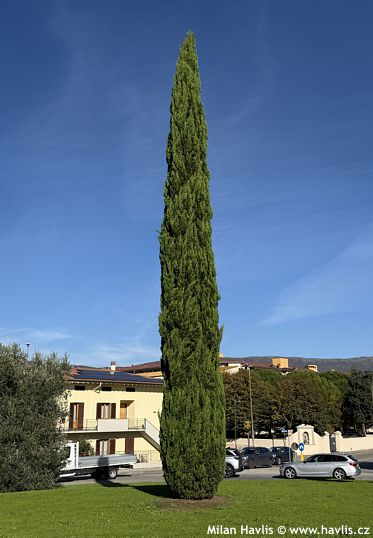
.jpg)
.jpg)
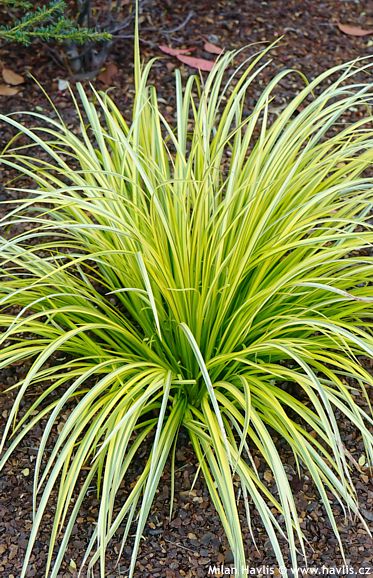
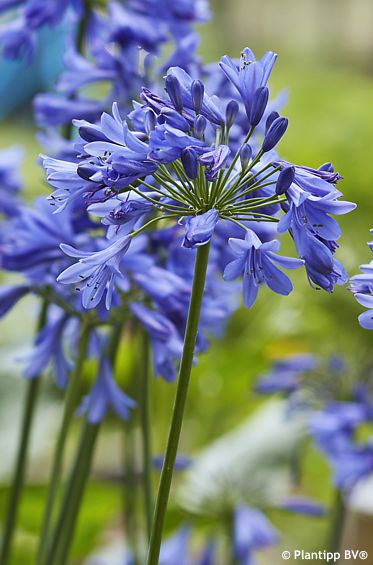
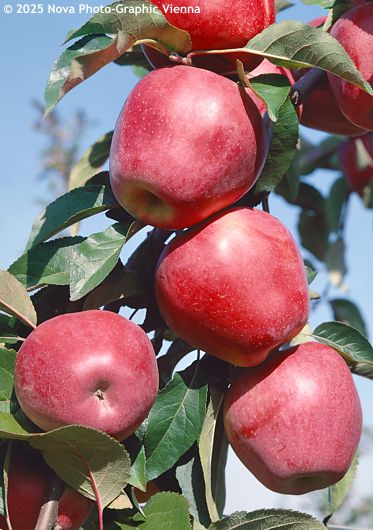
.jpg)
.jpg)
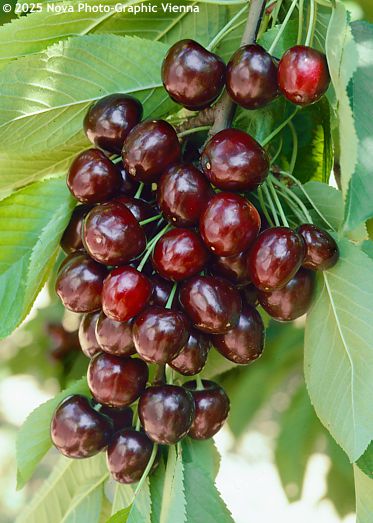
.jpg)
.jpg)
.jpg)
.jpg)
.jpg)
.jpg)
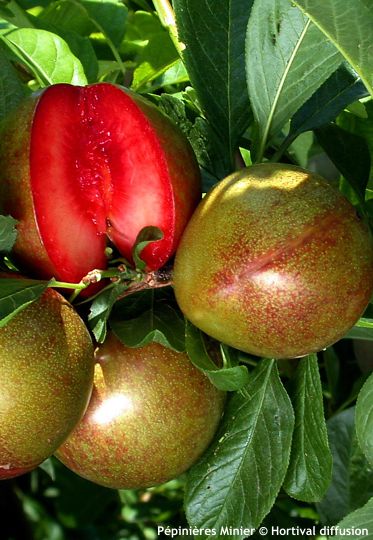
.jpg)
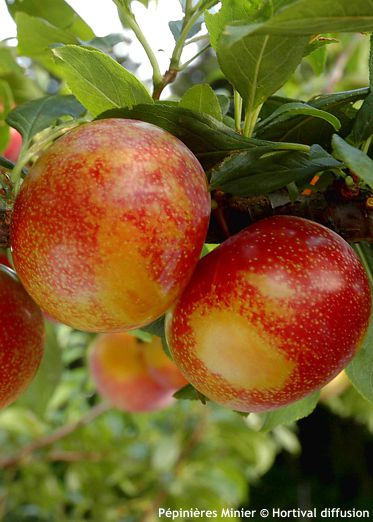
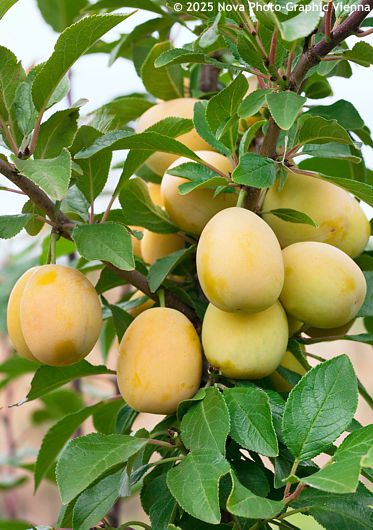
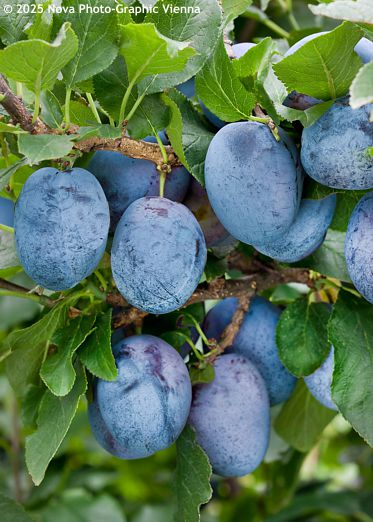
.jpg)
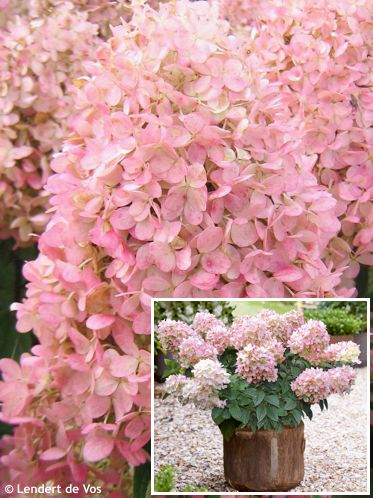
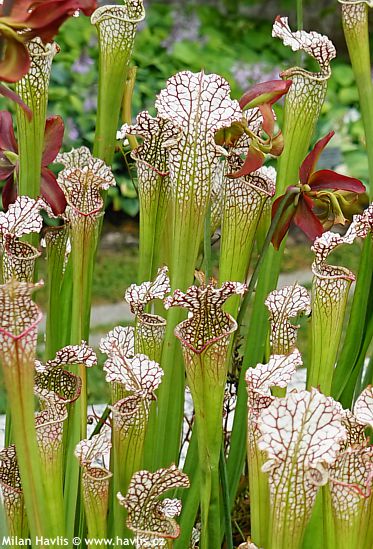
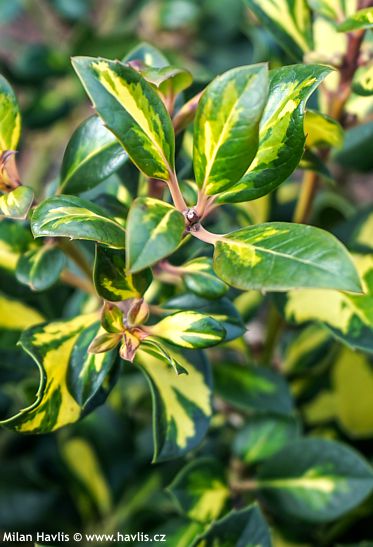
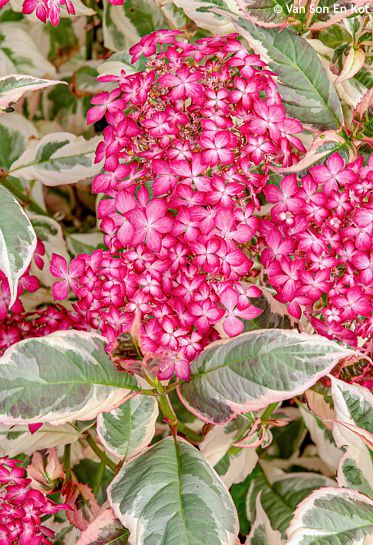
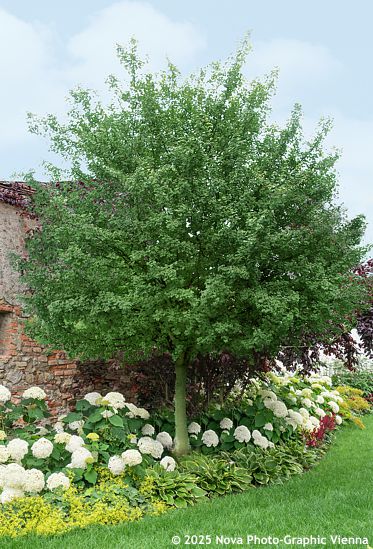
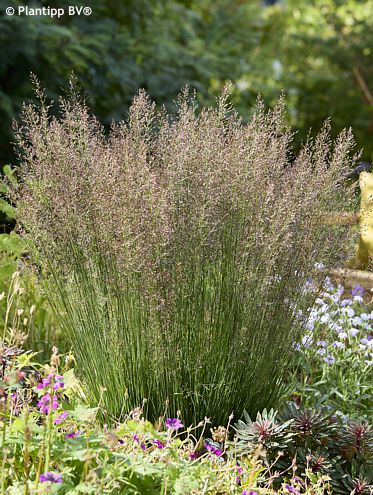
.jpg)
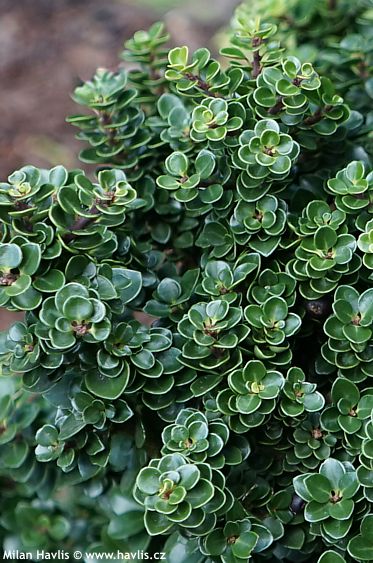
.jpg)
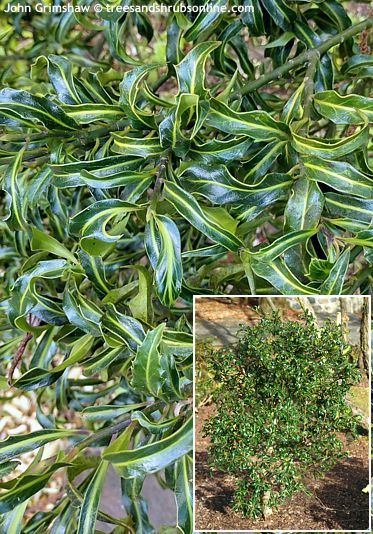
.jpg)







.jpg)

.jpg)

.jpg)


.jpg)
.jpg)
.jpg)
.jpg)
